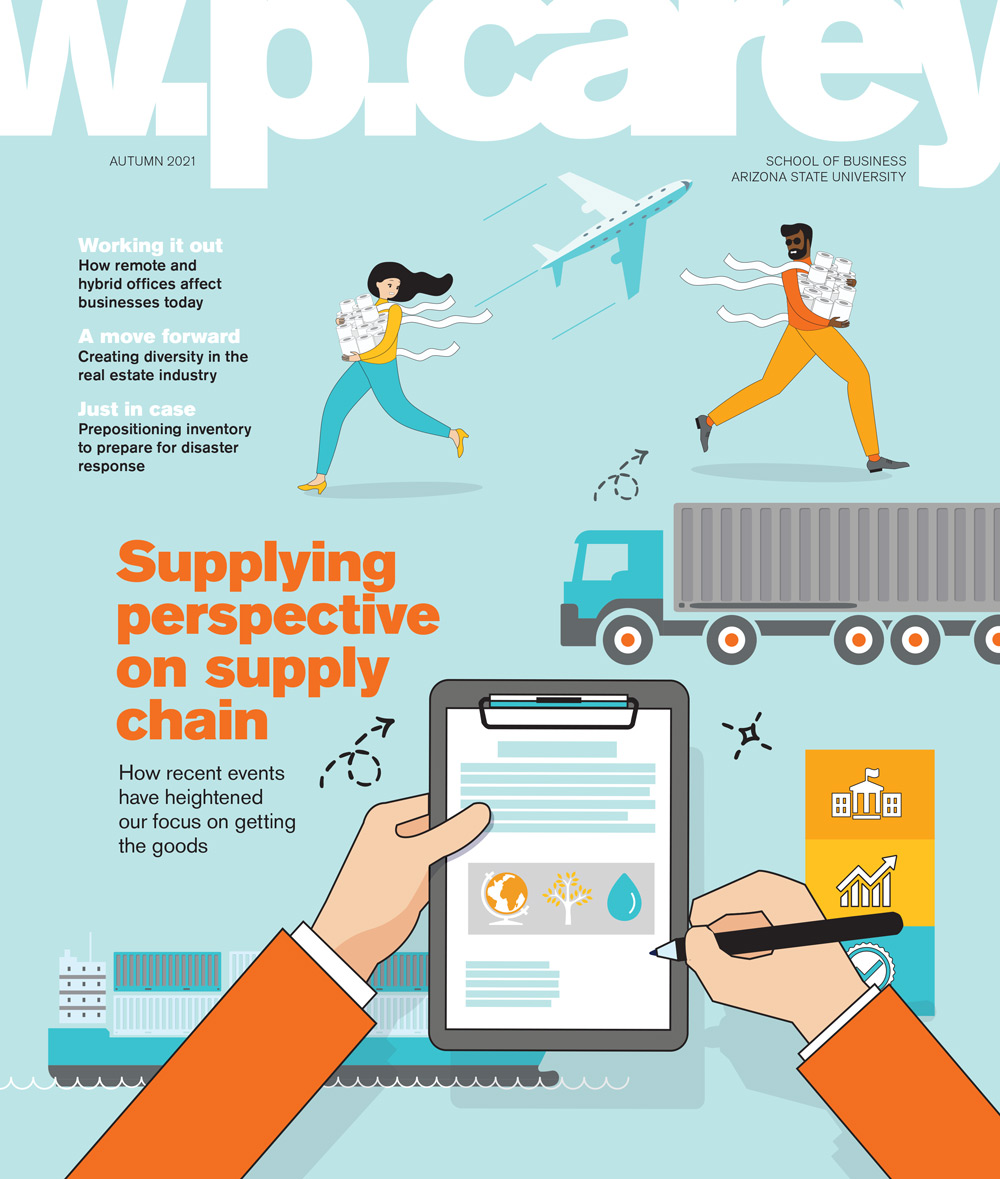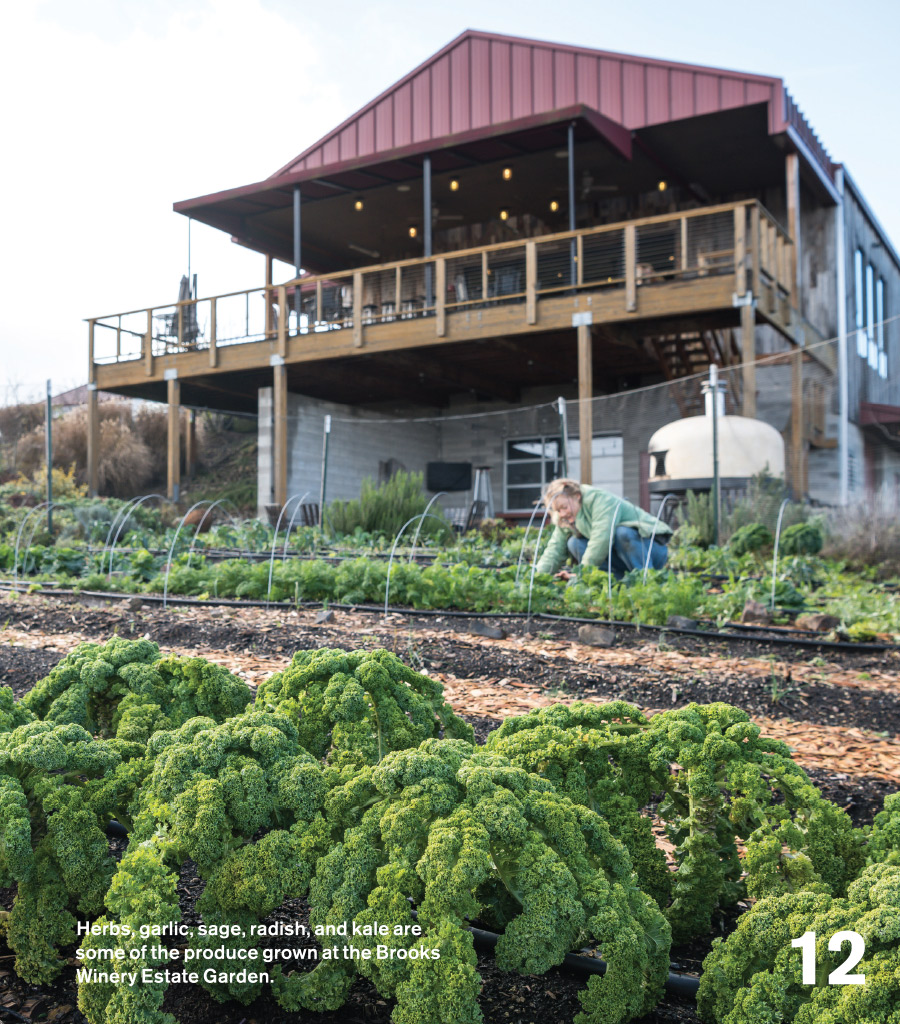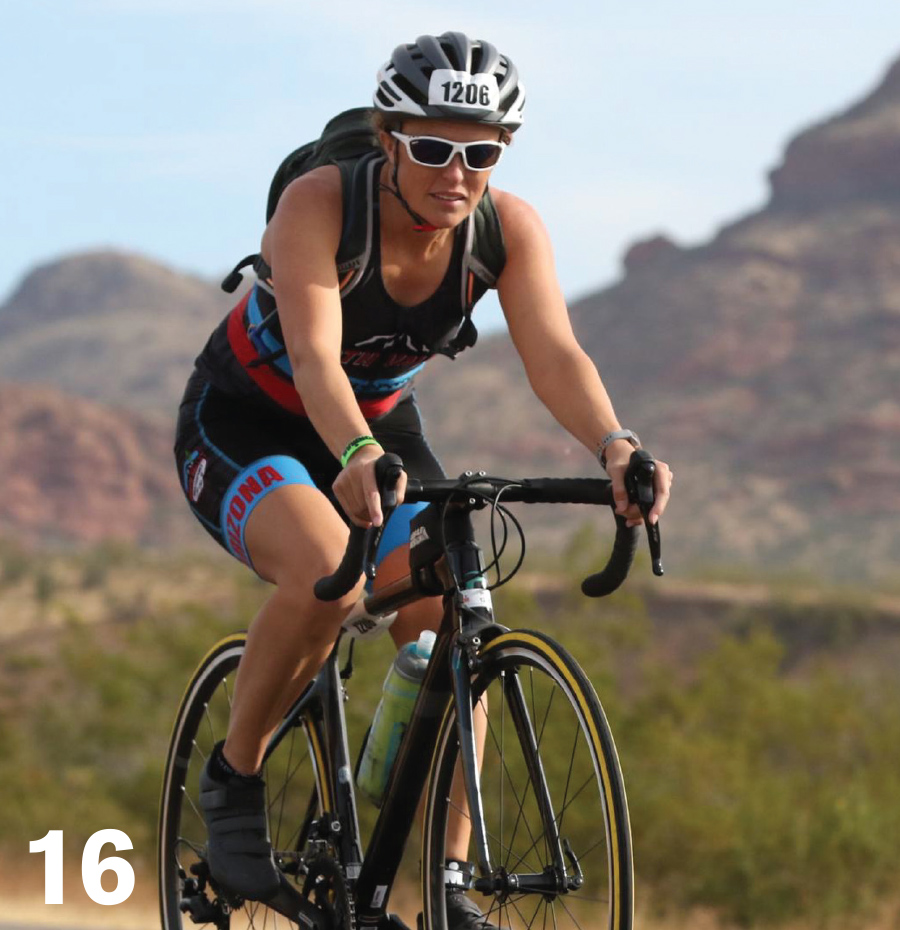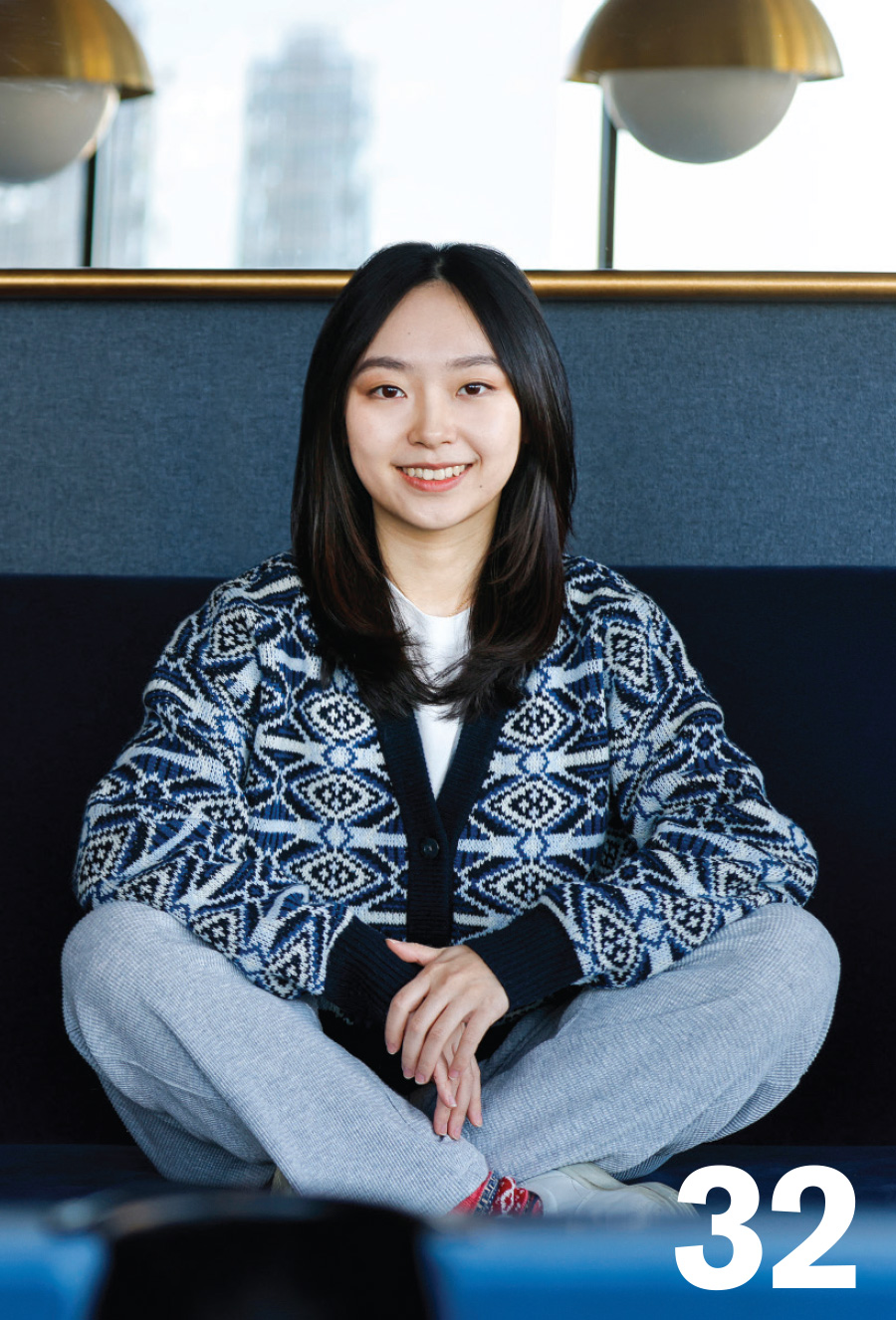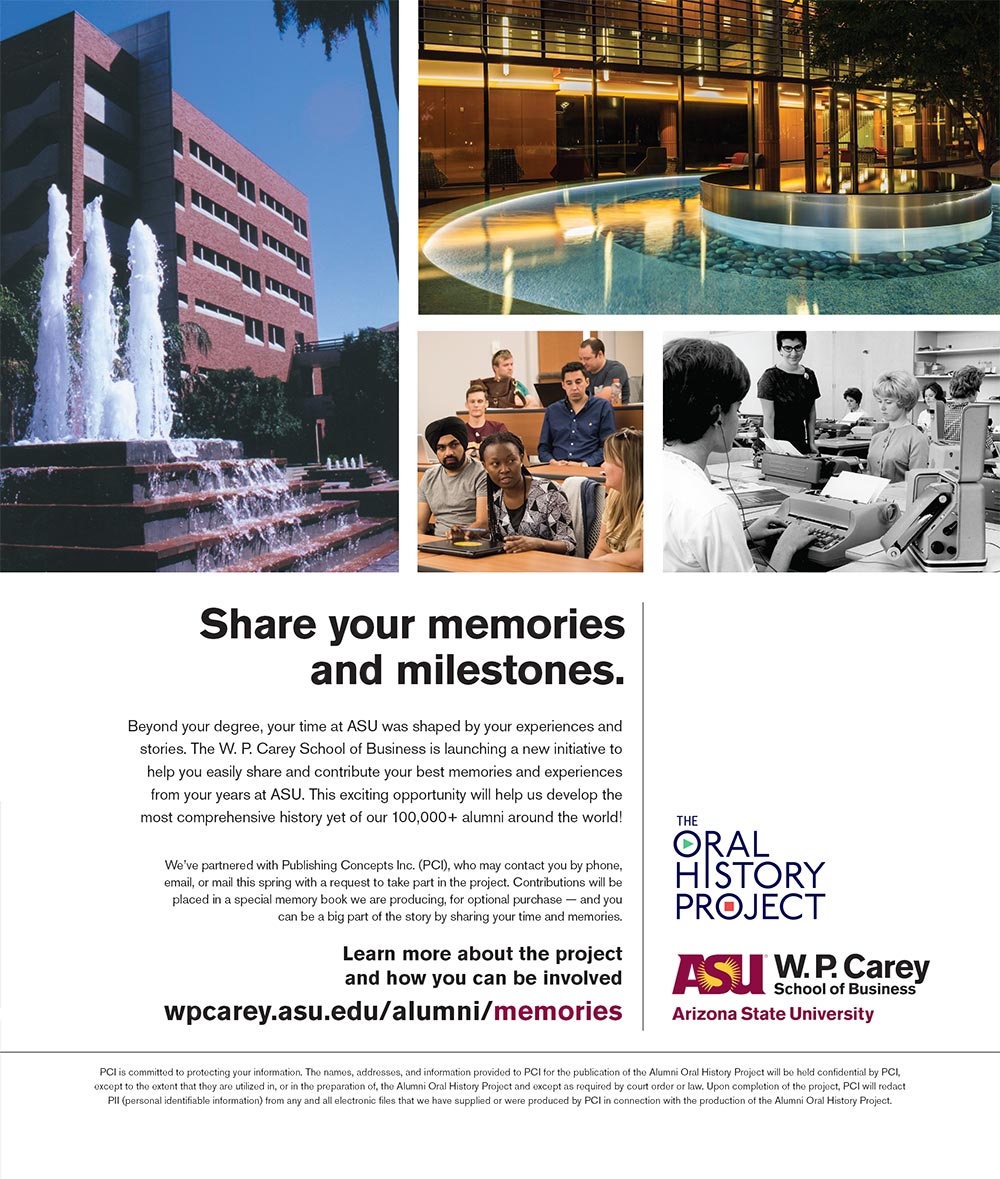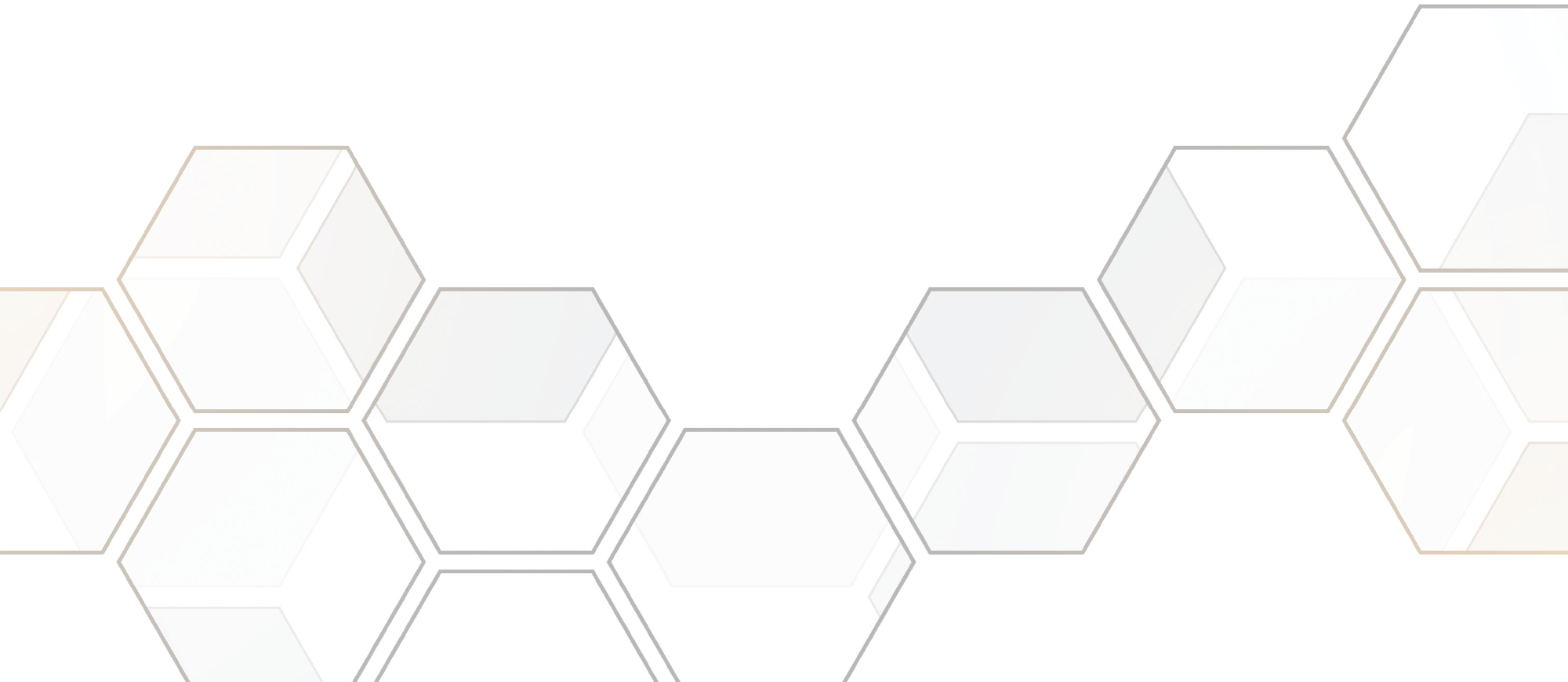
W.P. Carey Spring 2022
(BS Business
Administration ’03)
community connects with ASU,
industries, and the world
“Teamwork is the ability to work together toward a common vision. The ability to direct individual accomplishments toward organizational objectives. It is the fuel that allows common people to attain uncommon results.”
The ASU West campus at night. Home to 10 W. P. Carey undergraduate majors and concentrations, the Master of Science in Global Logistics, and the new Knight-Swift Logistics Lab, West campus landmarks include the Albert Paley-designed entry gates, extensive public art, and at the center of campus, Fletcher Lawn. This commons is a contemporary homage to traditional university education, as is the Oxford-inspired architecture around it on the courtyard-fashioned campus.
“Teamwork is the ability to work together toward a common vision. The ability to direct individual accomplishments toward organizational objectives. It is the fuel that allows common people to attain uncommon results.”
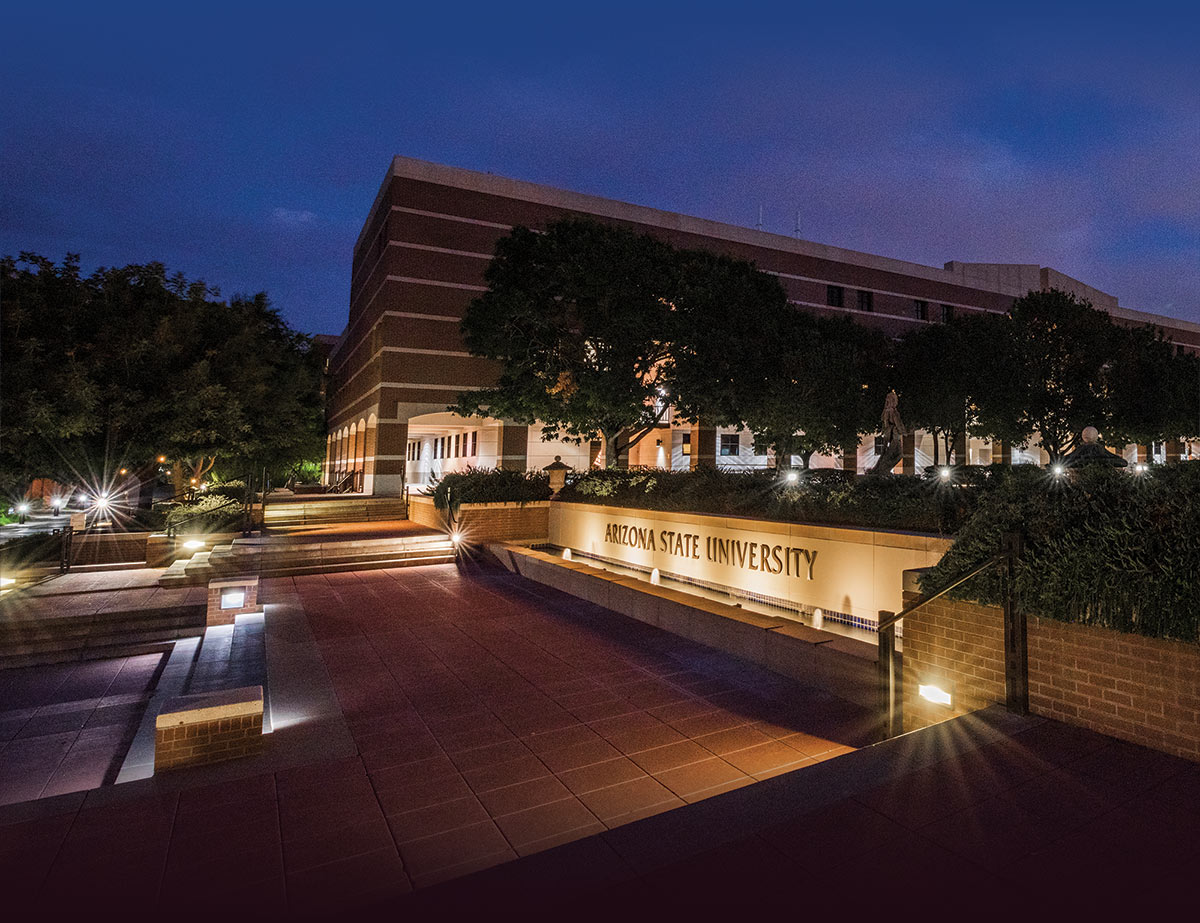
The ASU West campus at night. Home to 10 W. P. Carey undergraduate majors and concentrations, the Master of Science in Global Logistics, and the new Knight-Swift Logistics Lab, West campus landmarks include the Albert Paley-designed entry gates, extensive public art, and at the center of campus, Fletcher Lawn. This commons is a contemporary homage to traditional university education, as is the Oxford-inspired architecture around it on the courtyard-fashioned campus.
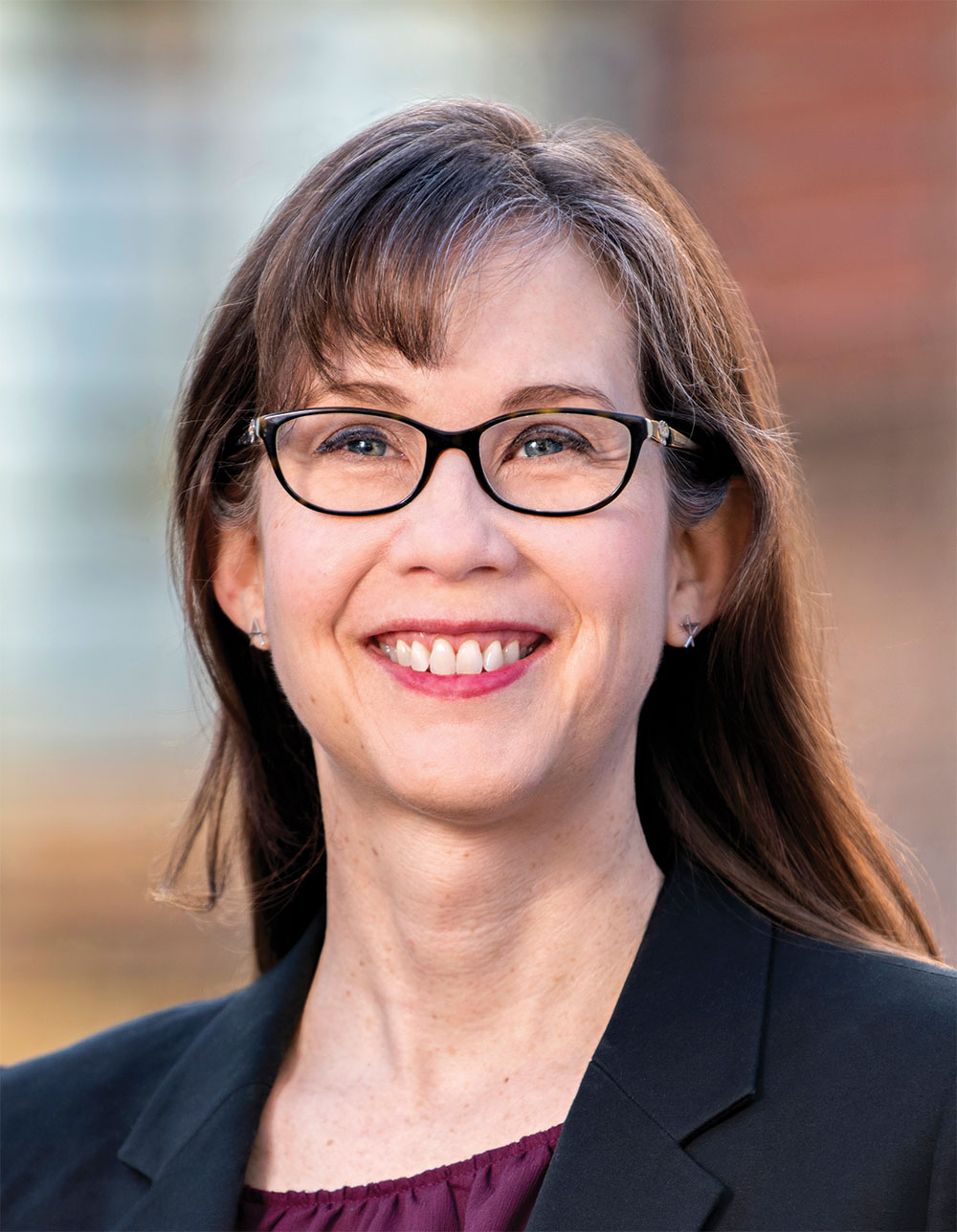
Friends of W. P. Carey,
reetings! This spring at W. P. Carey has been filled with exciting announcements for our school. From the anticipation of a new dean to the latest U.S. News & World Report undergraduate rankings, we have a lot to share.
Importantly, all of what we accomplish is possible only because of the collaboration and support of our extended community. That’s our focus for this issue of W. P. Carey magazine. We take a look at how teamwork — from multidisciplinary research to public-private partnerships and interdisciplinary applied student projects — makes the impossible suddenly possible. Collaboration also enriches our lives, helping us forge new relationships and gain broader perspectives.
The past several years have made it abundantly clear that no one person, no one school, no one discipline, no one company can go it alone. Working together is the way forward. We’re happy to continue to shape the future of business with you.
Thank you for your ongoing support and involvement with the W. P. Carey School. Let me know if you have any ideas for how we can collaborate more in the future. I would love to hear from you. Email me at Amy.Ostrom@asu.edu.
Warm regards,
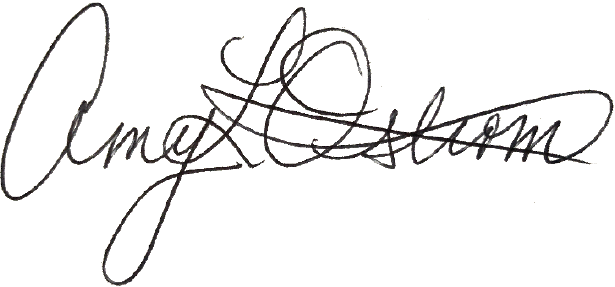
Interim Dean
PetSmart Chair in Services Leadership
W. P. Carey School of Business
W. P. Carey Indigenous Land Acknowledgement
Letter to the editor
As an ASU alum, I always love reading the W. P. Carey publication to learn about all the amazing things current staff, students, and fellow alumni are doing in the world.
Corrie Francis (BS Marketing ’01)
Editor’s note: Posts have been edited for length and clarity.
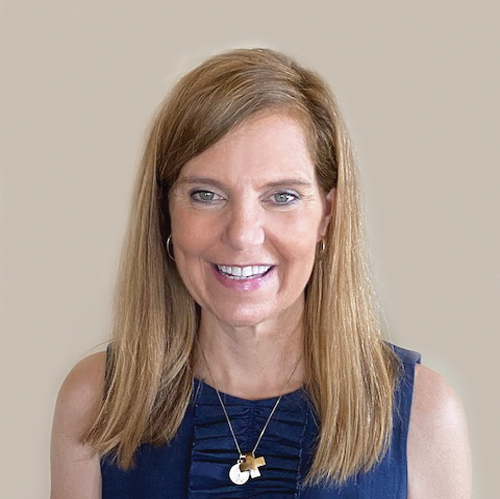
 Bernadette Grattan (BS Finance ’91)
Bernadette Grattan (BS Finance ’91)
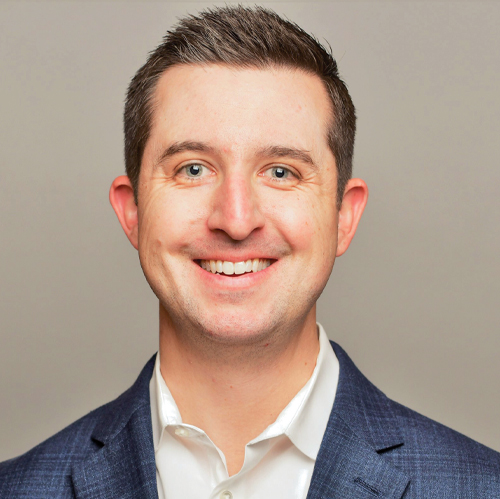
 Seth Friberg (BS Supply Chain Management ’09)
Seth Friberg (BS Supply Chain Management ’09)
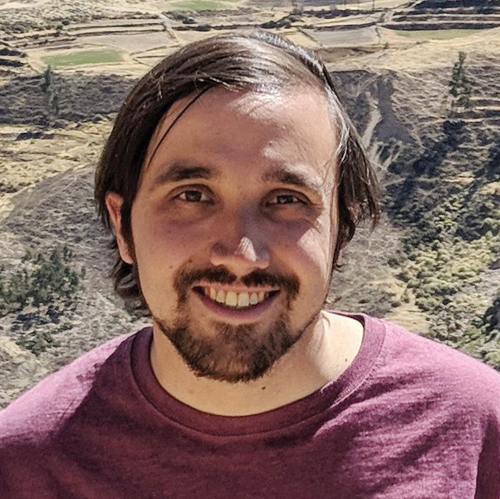
 Paul Strong (MBA ’18)
Paul Strong (MBA ’18)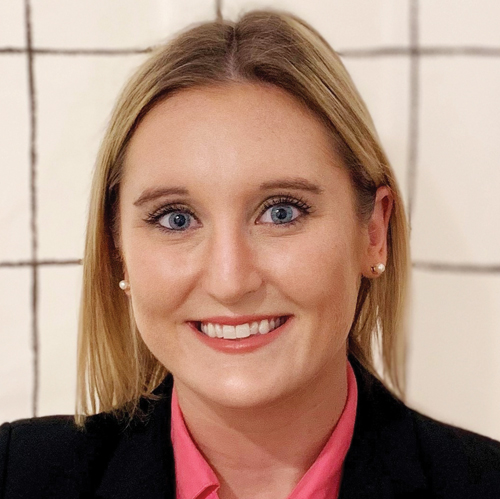
 Elise Kerner (MBA ’19)
Elise Kerner (MBA ’19)

Volume 9, Issue 2, Spring 2022
Amy L. Ostrom, PhD
Interim Dean, PetSmart Chair
in Services Leadership
Colin Boyd
Executive Director, Marketing
and Communications
Tamara Boaz
Interim Executive Director
of Development
Theresa Shaw
Manager of Alumni Relations
W. P. Carey Alumni
wpcarey.asu.edu/alumni
Facebook
facebook.com/wpcareyschool
LinkedIn
wpcarey.asu.edu/linkedin
Twitter
@WPCareySchool
Shay Moser
Senior Creative Director
Paula Murray
Staff Contributors
Emily Beach, Perri Collins, Hannah O’Regan, Madeline Sargent, Hunter McCormick, Tiana Morgan
Contributors
Joe Bardin, Melissa Crytzer Fry, Jane Larson, Betsy Loeff, Erin Peterson, David Schwartz, Jennifer Daack Woolson
Photographers
W. Scott Mitchell, Michael Paras, Shelley Valdez
Managing Editor
W. P. Carey School of Business
Arizona State University
PO Box 872506
Tempe, AZ 85287-2506
Changes of address and other subscription inquiries can be emailed to:
editor.wpcmagazine@asu.edu
W. P. Carey magazine is a publication of the W. P. Carey School of Business at Arizona State University © 2022
Send editorial submissions and letters to:
editor.wpcmagazine@asu.edu
Collecting lenses for greater understanding
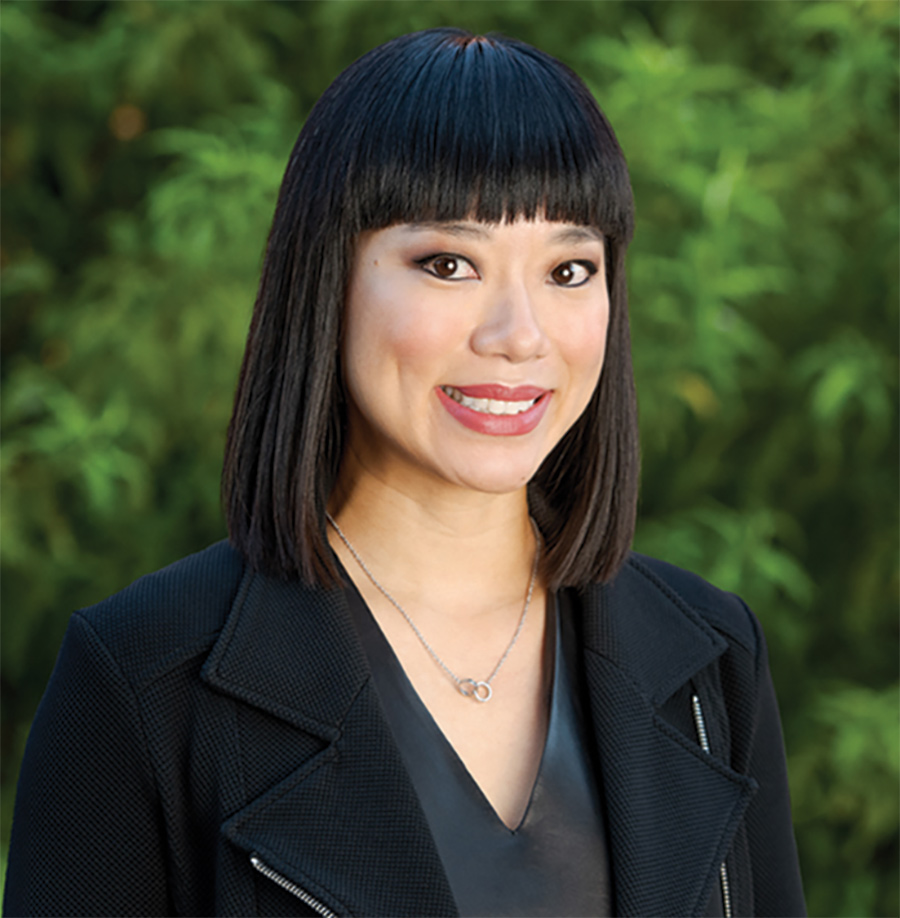
Collecting lenses for greater understanding
Alumna Grace O’Sullivan says DEI is crucial to examine
s vice president of Corporate Engagement and Strategic Partnerships for ASU’s Knowledge Enterprise, Grace O’Sullivan (MBA ’10) is responsible for advancing high-impact partnerships, and corporate and economic development. She recently joined the W. P. Carey School of Business for a discussion around diversity, equity, and inclusion (DEI).
A second-generation American of Chinese descent, O’Sullivan has always felt somewhat like an outsider. “When I think about inclusion, I reflect on my personal experience. I grew up in a home that spoke only Mandarin Chinese,” she says. “I didn’t learn English until I went to kindergarten.”
O’Sullivan describes examining the lens through which we see inclusion, belonging, and diversity as essential work. “Whether it’s managing yourself or your internal state, your values and beliefs impact how you carry yourself in every situation.”
ALL THINGS WPC
Silicon Valley Southwest
rizona is poised to be at the epicenter of the American semiconductor revolution, with ASU playing a starring role. Last spring, two of the world’s largest chipmakers, Intel and Taiwan Semiconductor Manufacturing Company (TSMC), announced plans to spend a combined $32 billion building three semiconductor fabrication plants in the Phoenix region. TSMC purchased enough land to possibly build five more fabs, which would invest billions of dollars more.
“Every electronics manufacturing job in Arizona accounts for another five or so jobs in vendors and suppliers,” says Dennis Hoffman, a professor of economics and director of the L. William Seidman Research Institute. “It’s a valuable asset for the state’s economy.”
Visit wpcarey.asu.edu/aznext to learn about W. P. Carey’s collaboration with the Ira A. Fulton Schools of Engineering and New College of Interdisciplinary Arts and Sciences, which brings together employers, workforce development networks, economic development organizations, and industry partnerships to create a workforce ecosystem to boost the talent pipeline in advanced manufacturing roles.
Future Events

Whether hosted on campus, in your hometown, or 100% online, events are a great way to reconnect with fellow alums and your alma mater.
Highlights from the W. P. Carey School’s spring lineup include the Economic Club of Phoenix and a new series of alumni workshops by the team in the W. P. Carey Career Services Center.
Join us! You’ll be glad you did: wpcarey.asu.edu/events
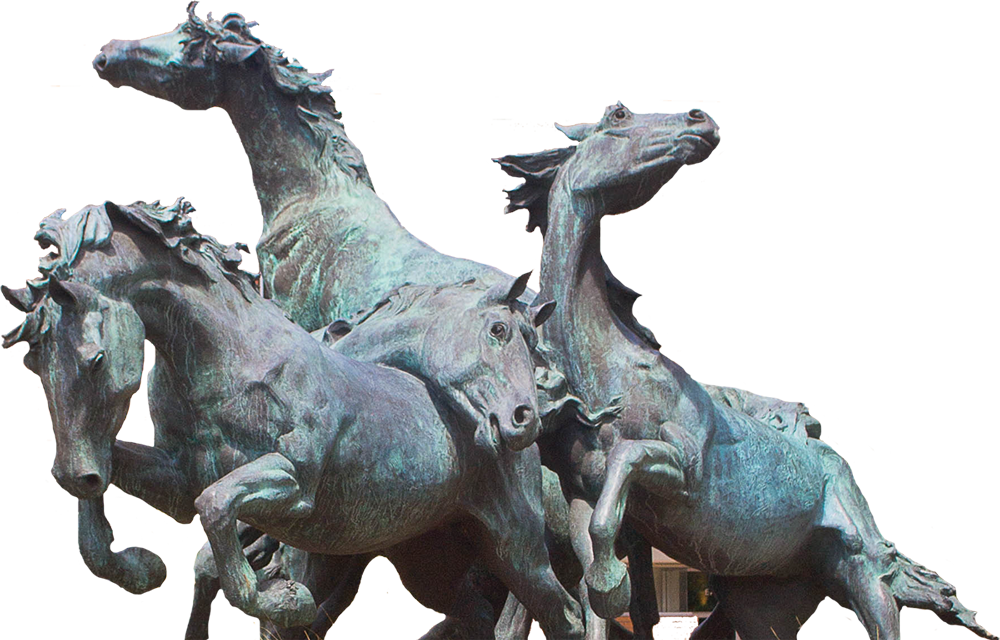
Employment Report
t the W. P. Carey School of Business, we measure ourselves by who is included and how they succeed. Employment outcomes are used in MBA programs worldwide to understand how career curriculum and programming innovations translate to market relevance and readiness for our students and alumni. These facts and figures also help illustrate what our students go on to accomplish after graduation. Here, we are pleased to highlight the Full-time MBA Class of 2021.
Full-time accepted offers
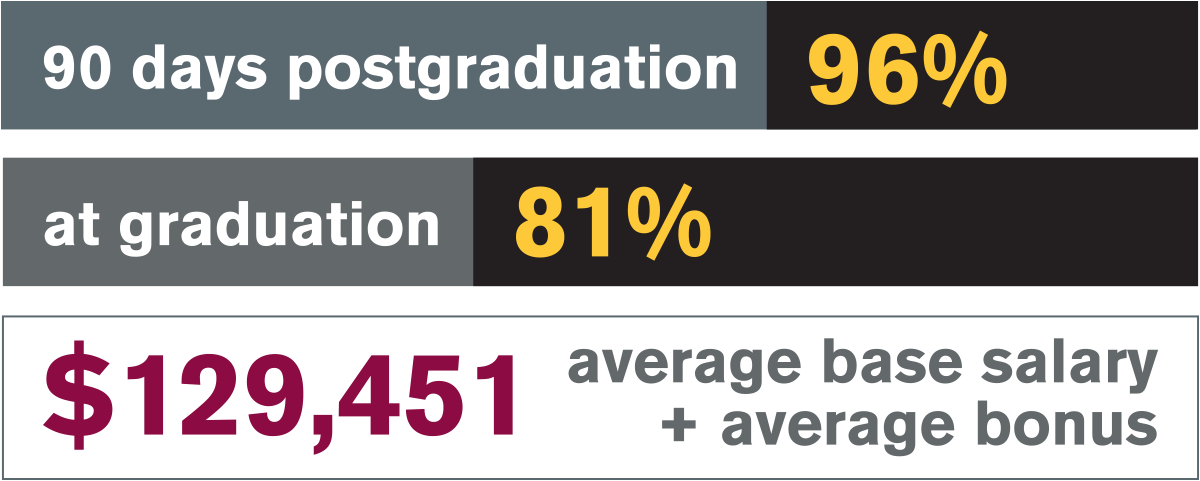
Job Function
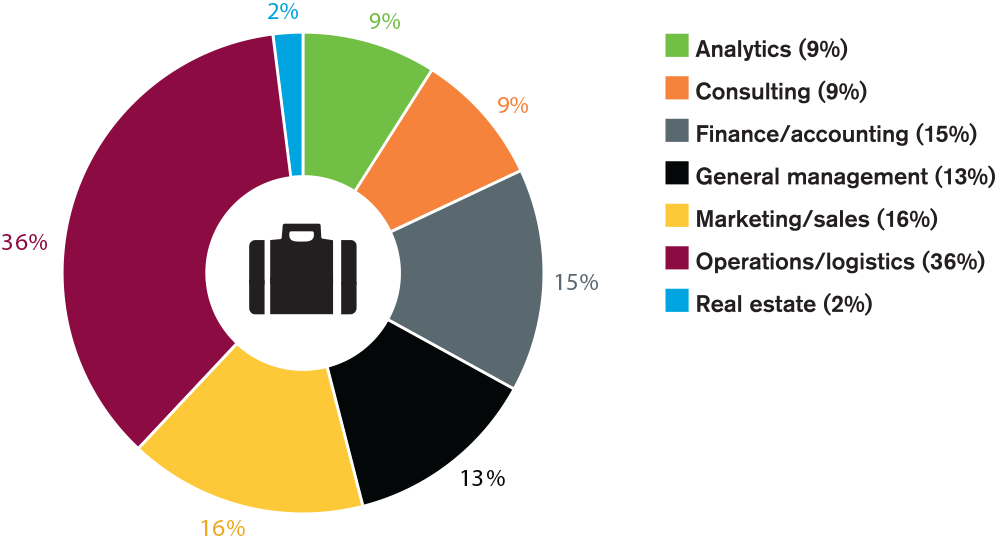
ALL THINGS WPC
Meet W. P. Carey’s next dean
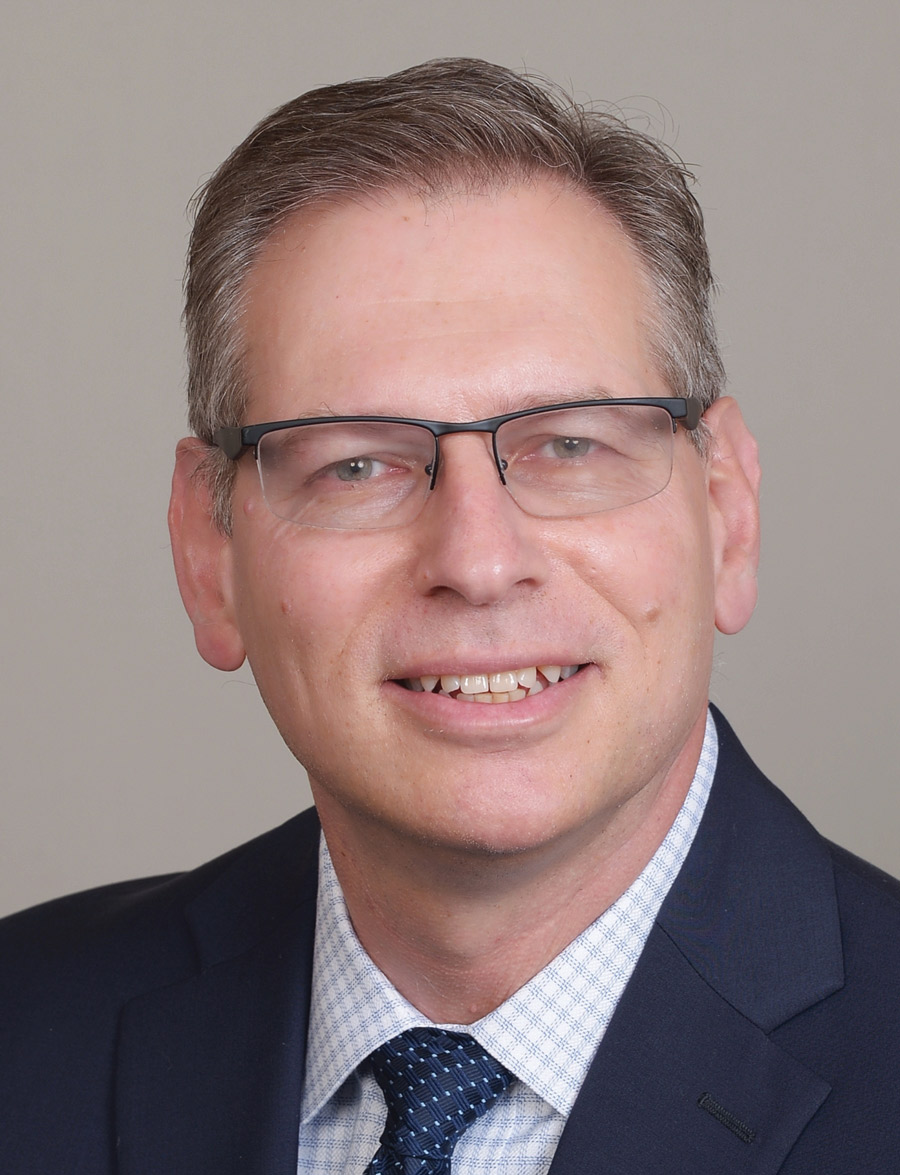
Quick stats
Current role:
Vice dean for education and globalization at Olin Business School, Washington University in St. Louis
PhD:
Finance, Hebrew University of Jerusalem
Interests:
Multidisciplinary collaboration, global business education, data-driven decisions
fter an intensive national search process, Arizona State University announced Ohad Kadan as the new dean of the W. P. Carey School of Business. While his role at W. P. Carey officially begins July 1, Kadan is already starting the transition; he is attending several school events this spring, leading strategic planning sessions, and gaining an understanding of the ASU system.
“I am thrilled to be joining W. P. Carey and ASU and am looking forward to the continued growth of an already outstanding school,” says Kadan. “One of the things that most excites me about W. P. Carey is its commitment to inclusive access to worldclass business education.”
Kadan joins W. P. Carey during a crucial period for higher education. “W. P. Carey prides itself on channeling ASU’s spirit of innovation and rethinking what’s next in business education,” he says. “I’m excited to lead the school into emerging areas, while never losing sight of its commitment to student success and cutting-edge research.”
ALL THINGS WPC
Program snapshot: W. P. Carey Executive MBA
xecutive MBA programs are known for their ability to propel high-performing, experienced managers into the next stage of their careers. Our EMBA is no different, helping candidates expand their leadership skills and immediately impact their organizations.
The W. P. Carey EMBA is highly ranked by U.S. News & World Report (No. 18), ahead of Yale, Georgetown, and USC; The Economist (No. 23, worldwide); and Poets & Quants (No. 4). Plus, Poets & Quants gave us the top spot for programs costing less than $100,000.
Throughout the two-year program, students develop a strategic perspective and learn how policy shapes business decisions, and how companies half a world away can affect organizations. The EMBA is also STEM-designated, allowing eligible graduates on student visas access to an Optional Practical Training (OPT) extension for up to 36 months.
Executive MBA classes meet on ASU’s Tempe campus for one in-residence weekend per month. The intensive weekend includes classes both Friday and Saturday, with Friday overnight lodging provided. Live virtual course content is also delivered on one additional Saturday per month, for a four-hour time block, allowing students greater flexibility to meet course commitments while still balancing work and life.
Executive MBA alumni receive a lifelong learning benefit, and are invited to attend free elective classes throughout their careers.
“The EMBA program far exceeded my expectations,” says Karen Marshall (Executive MBA ’18). “It gave me the knowledge and confidence to pursue a new and unexpected entrepreneurial career path — a lifelong dream that, until now, I thought was out of reach.”
Visit wpcarey.asu.edu/emba to learn more.
ALL THINGS WPC
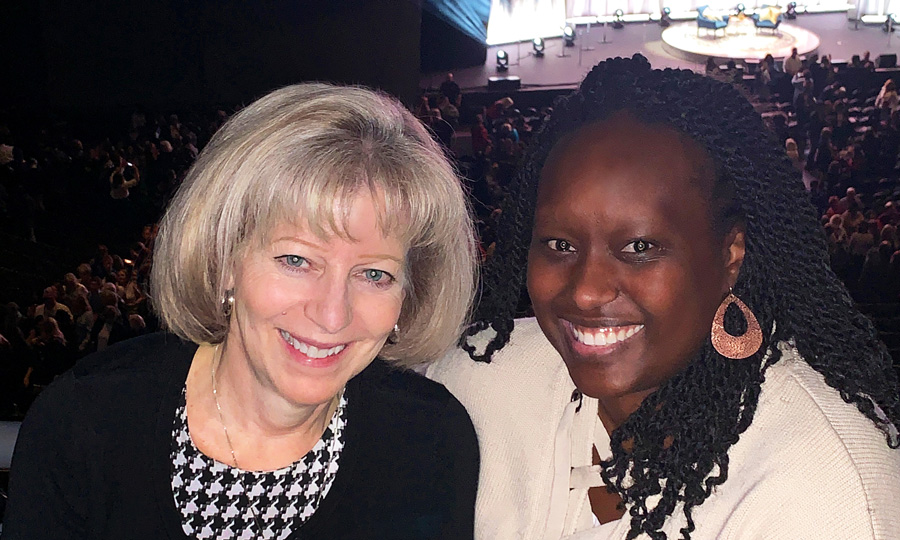
Leadership is in the small moments
Learning Opportunities
Sun Devil Stories
Having tough conversations helps students identify and achieve meaningful professional and personal goals. “There’s a lot of future career questions mentees need to answer honestly for themselves,” says Barrett. “If your career trajectory is based on how other people are going to look at you, you may achieve success, but you may not enjoy it as much as you otherwise would have.”
In her five years as an Executive Connections mentor, Barrett has met many excellent students. “They all have a unique story with varying aspirations,” she says. “Sharing my successful (and unsuccessful) experiences helps them in many ways and, ultimately, I learn from them, too.”
ALL THINGS WPC
Inclusion at W. P. Carey: Full-time MBA students share their perspectives
Community Engagement
t a recent school event, student panelists Chikezie Anachu, Monica Loza, Tamara Kelson-Norris, and Pitu Sim discussed what diversity, equity, and inclusion (DEI) means to them as they navigate their Full-time MBA experience.
The students have frequent conversations, in both their classes and the various on-campus organizations they lead, on how to enhance DEI efforts at W. P. Carey and beyond. “My conversations with Pitu, Chike, and Tamara have empowered me to step into a leadership role that I wouldn’t have otherwise taken on,” says Loza, who serves as vice president of DEI for the MBA Association at ASU.
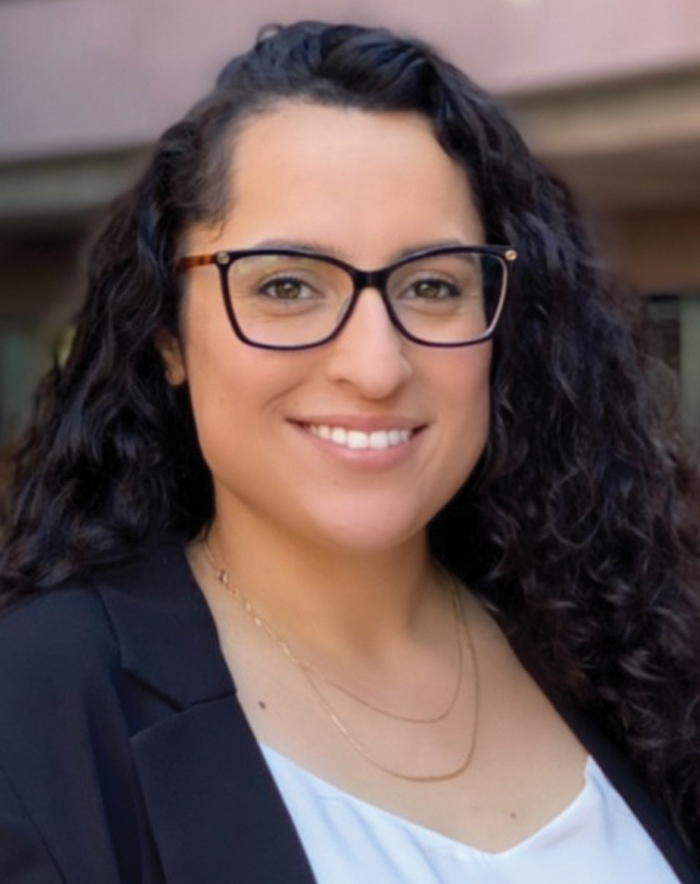
Each student has stories about the experiences that led them into leadership positions within ASU. “I looked at my life and saw that it may have been different than someone who doesn’t come from a Hispanic background or isn’t a woman,” says Loza. “I went through the education system, noted the discrepancies, and dreamed about how I could make it better for those who follow in my footsteps.”
ALUM President Kelson-Norris says younger generations are more willing to speak up, “have difficult conversations, and keep the positive momentum and social change going.”
LIFT off: New diversity, equity, and inclusion initiatives transform campus experiences

n 2020, ASU President Michael Crow announced a campuswide effort to improve experiences and outcomes for Black and African American members of the ASU community. The LIFT (Listen, Invest, Facilitate, Teach) Initiative began with 25 calls to action to address embedded injustices and structural problems within our institutions and society at large.
Associate Dean of Research and Professor Jeffrey Wilson co-leads the LIFT Initiative, and also heads the W. P. Carey diversity, equity, and inclusion (DEI) committee. “We have been trying to both listen and act,” he says. “There are things we can do right away and then there are longer-term actions that start right away, but we might not see the outcomes for several years.”
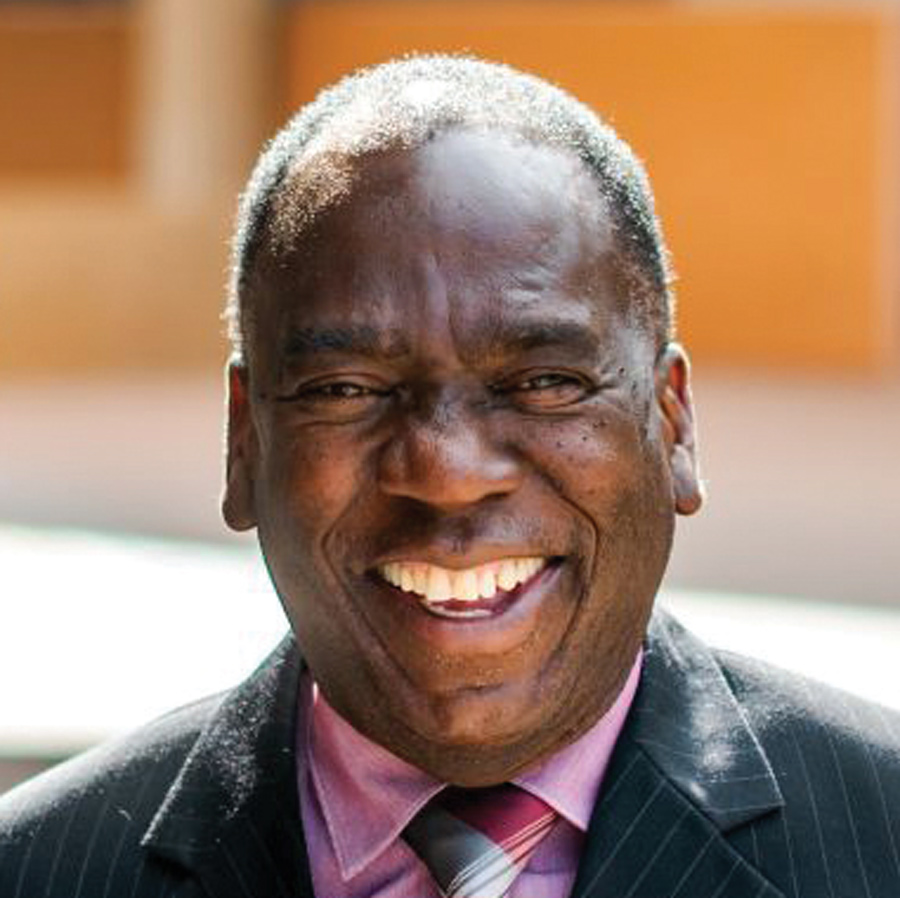
“I’m proud of the early work we have done, invigorated to take the next steps, and cognizant there’s a long way to go,” says Wilson.
Read the ASU LIFT Report: wpcarey.asu.edu/lift
ALL THINGS WPC
The prestige of your degree keeps growing
ood news! The value that comes with your W. P. Carey degree keeps growing as the school’s programs continue to ascend in the rankings. In this year’s annual U.S. News & World Report undergraduate rankings, our programs are ranked No. 23, ahead of Johns Hopkins, Purdue, and the University of Arizona. Earlier in the year, U.S. News also released its online degree rankings. W. P. Carey’s online undergraduate programs took the top spot — No. 1, ahead of the University of Florida, Penn State, and Syracuse University.
The school also improved in 10 undergrad department rankings, including jumping to the No. 2 spot in the historically strong supply chain management degree. The undergraduate business analytics program made the top five, making it the top destination for business analytics in the Southwest.
Other key department rankings include:
- Production operations, No. 7
- Management information systems, No. 9
- Quantitative analysis, No. 10
- Accounting, No. 11
- Marketing, No. 11
- Management, No. 15
- International, No. 16
- Finance, No. 19
- Entrepreneurship, No. 32
In total, U.S. News ranks 31 W. P. Carey programs and disciplines among the top 25, the most of any business school in the country.
“We’re very proud of these new rankings, and think they represent the consistent work W. P. Carey is doing to provide students with an excellent business education that readies them for professional success,” says Interim Dean Amy Ostrom. “It is an honor to be recognized by U.S. News and our peer schools as one of the top business schools in the country.”
Visit wpcarey.asu.edu/rankings to discover more top-ranked W. P. Carey degree programs.
ALL THINGS WPC
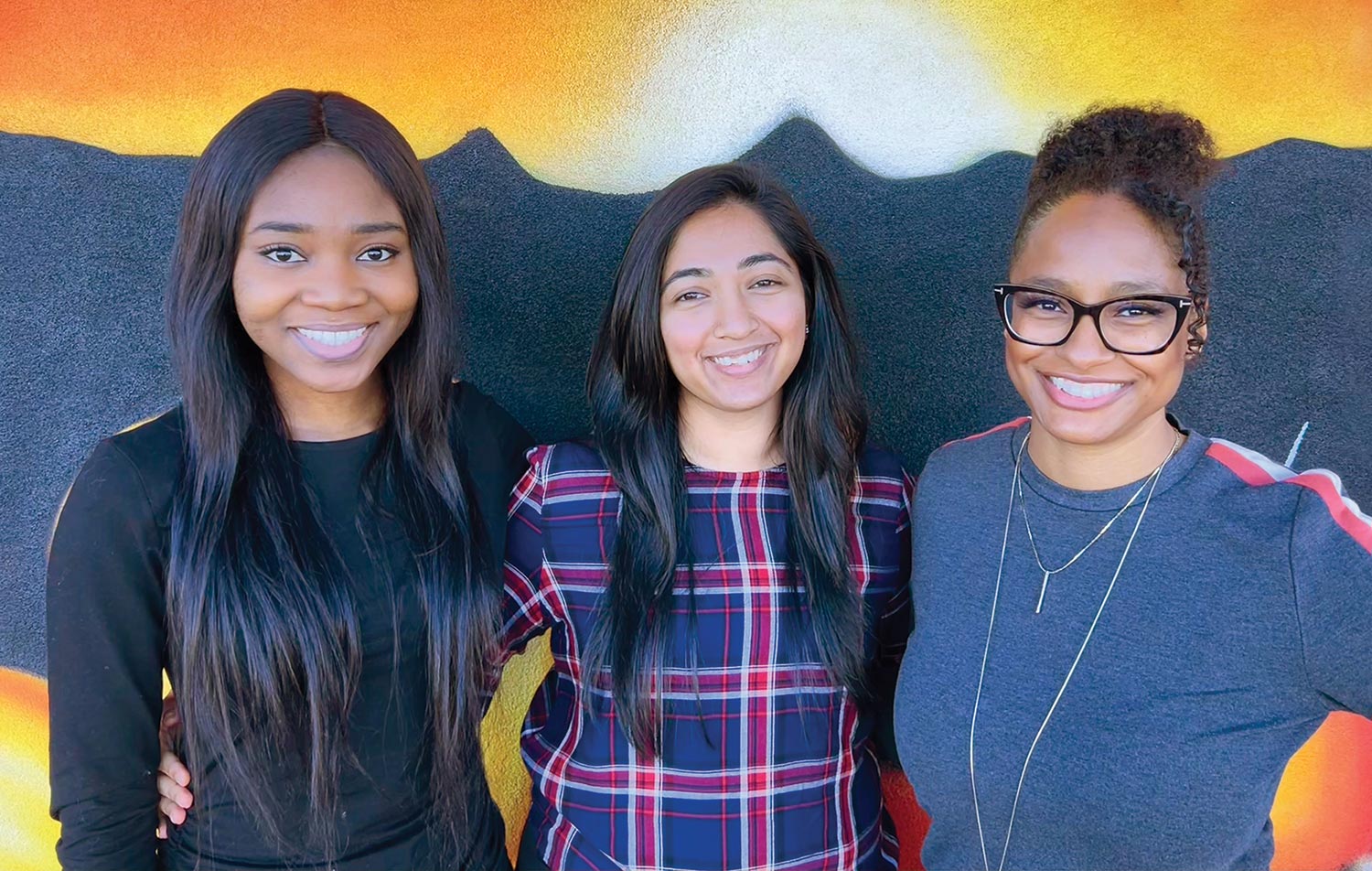
MBA students hit the road to help small businesses
Community Engagement
The W. P. Carey Class of 2022 MBA team of Olufisayo Abiodun, Tamara Kelson-Norris, and Mahalakshmi Ganesan won national first place.
“This was a chance to put our skills to work on behalf of business owners in need, and develop real strategies for them to survive and thrive in the unusual economic situation facing them right now,” explains Abiodun, a co-president of the W. P. Carey Entrepreneurship Club.
Twenty students represented W. P. Carey at the challenge in September against MBA students from across the country, including UCLA, Washington University, Rice University, Carnegie Mellon University, UC Berkeley, and the University of Washington.
Each team presented a three-minute case study laying out their business client’s challenges and proposed solutions. MBA students were judged on potential effect and how well the strategy could be executed, as well as their communication and presentation skills. Ultimately, their innovative ideas were shared publicly in a database to benefit other businesses in need.
The MBA students also had the opportunity to network with companies, including McKinsey, Bain, Boston Consulting Group, PricewaterhouseCoopers, KPMG, EY-Parthenon, Deloitte, Visa, Amazon, Google, and Walmart.
“The people we supported were sincerely grateful for our expertise and delivery over a short period,” says Abiodun. “This event is very dear to my heart because it involves supporting small businesses. Having run one in my home country, battling the many challenges it posed, I was super excited to integrate into the mission of the SBSC. I’m glad I got several students to sign up for it.”
Looking for MBA talent to elevate your business? Many alumni recruit at W. P. Carey. Visit wpcarey.asu.edu/recruit to learn more.

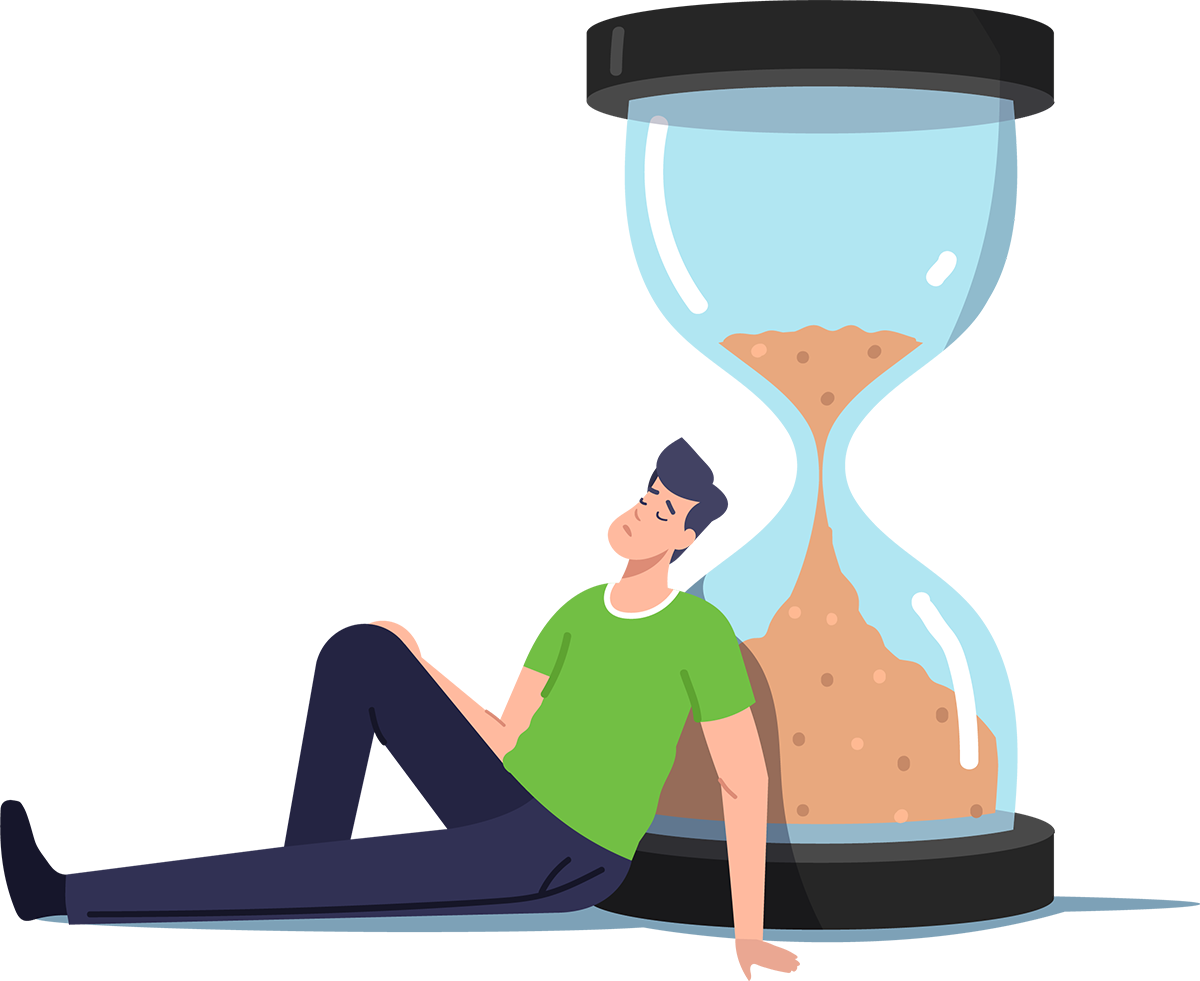
“Hey! Do you have a sec?”
ew research from Michael Baer and David Welsh, associate professors of management and entrepreneurship, weighs in on workplace distractions. Specifically, they ask whether workplace intrusions harm productivity, or if they have some benefits. The answer might surprise you.
While co-workers dropping by out of the blue is often seen as taking time away from work, the study found that some intrusions are beneficial. Specifically, what Baer and Welsh call “in-role” intrusions — when a co-worker comes by to ask about a project or to hand off a task — reengage employees and sometimes lead to enhanced collaboration.
Non-role intrusions, like asking about weekend plans, require greater mental energy to switch between and are more important to limit. Here are some tips for managing intrusions in the workplace.
5 tips for managing intrusions
- Be aware that trying to avoid all intrusions may cause you to miss out on meaningful benefits.
- Think of work-related intrusions as challenges that motivate you to work harder, rather than unnecessary distractions.
- Harness the opportunity that intrusions provide to share information and ideas with co-workers.
- If you’re a leader, consider implementing work arrangements that facilitate the work-related intrusions that can energize employees and foster collaboration.
- If you’re intruding on others, save your social, non-work topics for breaks.
Explore more W. P. Carey research
W. P. Carey News is your source for faculty research in supply chain management, entrepreneurship, management, analytics, and beyond: news.wpcarey.asu.edu/research
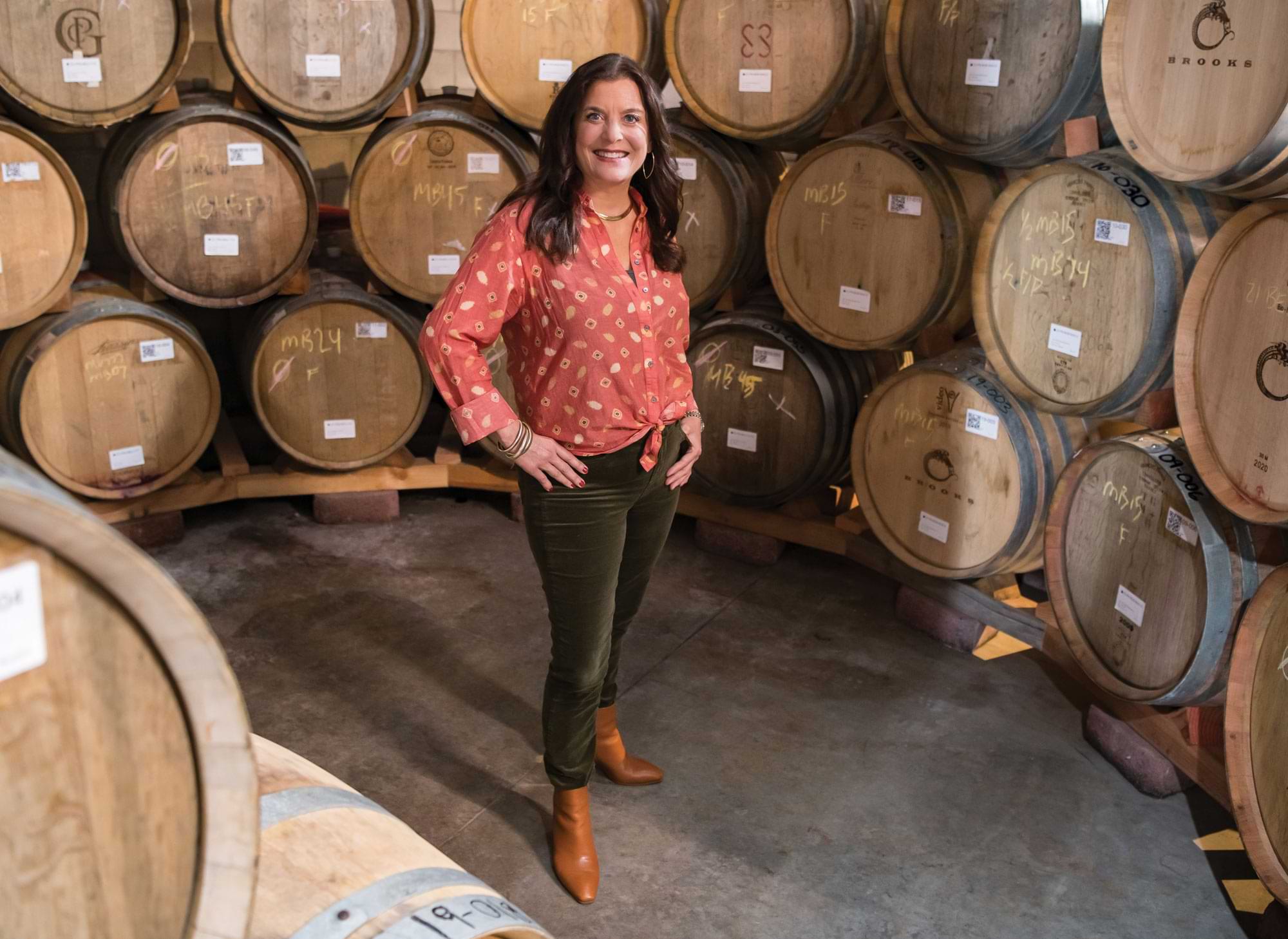
Balancing profit and purpose
n paper, Janie Brooks Heuck (BS Accountancy ’89) is an accountant who runs a winery. This may not sound like anything out of the ordinary — but in fact, its origins are worthy of an inspirational drama movie for the big screen, in which a lovely Willamette Valley, Oregon, fledgling winery is at risk of closure, in need of rescue after its eponymous founder’s untimely death. And in this story, Heuck is the heroine.
To be clear, she wasn’t looking for a gig as a managing director of a winery — or even as the finance director. Heuck had been happily ensconced in a corporate finance job in the health care industry. But in 2004, her brother Jimi Brooks passed away, leaving behind the winery that had been his life’s work.
“I was not at all interested in what he was doing,” Heuck recalls, “but the night he passed away, a group of winemakers from the area came to see me. They said they wanted to keep making Jimi’s wine, for free. They asked me to handle the business side.”
Get a hobby
aking the time to pursue hobbies can have all sorts of positive effects, such as improving your physical and mental health or adding new dimensions to your career. They can offer fun, much-needed breaks from your daily work, and a chance to be successful in another part of life.
Here’s what these W. P. Carey faculty, staff, and alumni do.
Samuelson: Professor and triathlete
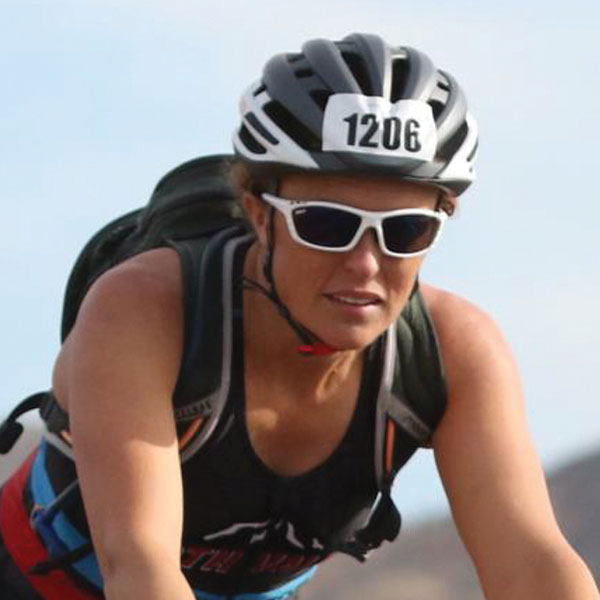
Melissa Samuelson’s hobby has taught her at least three things: Take one step at a time, prepare as much as you can in advance, and be ready to pivot to reach your goals.
Samuelson, a clinical associate professor of accountancy, started the sports side of her life as a cross-country runner. She took up cycling and swimming as ways to cross-train, which led to becoming a triathlete. She completed her first full Ironman race in November, finishing in 13 hours, 53 minutes.
Teaching ethics courses to undergraduates and competing in triathlons overlap in some ways, Samuelson says. When she has a huge project or a course to plan, she remembers that one step at a time is sometimes the best approach to a challenge. When she talks to students about studying and preparation, she thinks about how she manages her time to create a balance between work and training for a race. When she talks to them about professional goals, she tells them about planning for alternative ways to achieve them.
“Sometimes you’re going to have to pivot, make adjustments,” she says. “You’re going to have to make sure you’re still moving in the same direction, but you might need to do something in a way that you didn’t expect at first.”
Photo by FinisherPix®
Measuring what matters:
Alumni, students, and research by the numbers
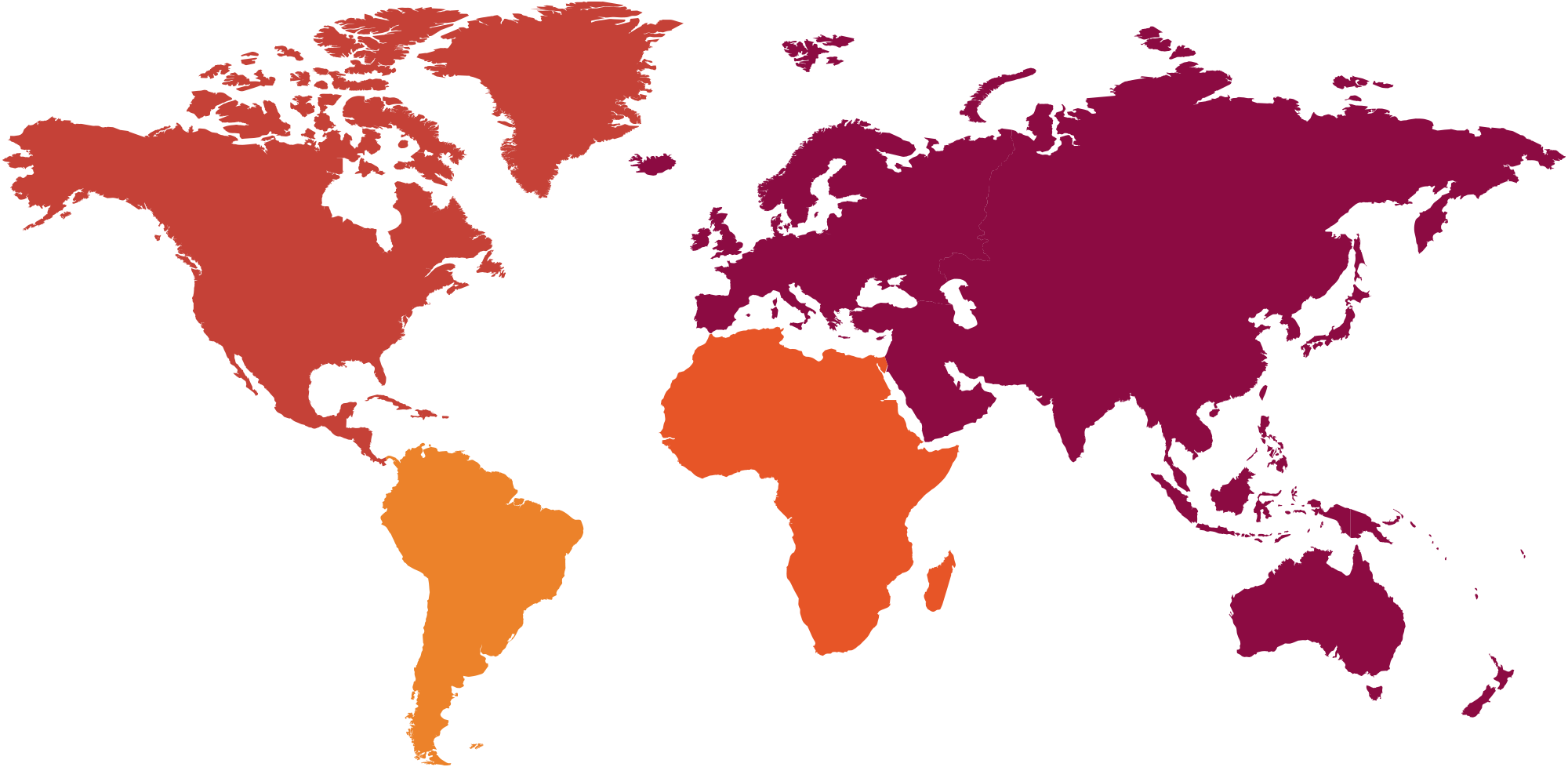

More than $16 million in research expenditures in 2021
This is spending that goes toward cutting-edge discoveries that help W. P. Carey rethink and reimagine business.
More than $4 million in grant or sponsored research funding in 2021
At W. P. Carey, we are tackling problems and questions important to our communities.
No. 6 in the U.S. for research expenditures in 2021
ASU is No. 6 in the U.S. for total research expenditures among universities without a medical school, according to 2021 HERD survey data.
No. 1 in the U.S., No. 9 in the world for global impact
ASU is ranked best in the nation and ninth in the world by Times Higher Education for advancing the United Nations’ Sustainable Development Goals, including global impact on poverty and hunger, developing solutions for clean water and energy, and promoting gender equality.
Joining forces
The results? Better-prepared students, more effective programs, and successful research. Here, in the following examples, we show exactly what that looks like — and why it matters.

Digging into climate change behaviors
ising temperatures, unpredictable rains, and other effects of climate change mean agricultural producers face more uncertainty every season than ever before. They also face the challenge of continually adapting to a changing climate to produce enough food to feed an increasing global population.
Cover crops — a crop grown for the protection and enrichment of the soil — show a lot of promise for mitigating climate change: increasing yields, reducing erosion, and improving soil quality. But cover crops are not a solution, says Alexis Villacis, assistant professor at the Morrison School of Agribusiness. Although farmers could add them to their soil management toolbox, many, especially those in the tropics, will not, according to Villacis’ recent research published in the journals Advances in Agronomy and Agricultural Economics.
The farmers’ mindset
The paper, “Potential Use of Cover Crops for Soil and Water Conservation, Nutrient Management, and Climate Change Adaptation Across the Tropics,” looked at the use of cover crops and other tools in developing countries such as Villacis’ native Ecuador. But he and his co-authors have not been just trying to understand whether these crops work to moderate climate change; they have also been digging deeper into farmers’ climate change behaviors.

What works with online weight-management platforms
ccording to the Centers for Disease Control, some 42% of people in the U.S. were at an unhealthy weight in 2018. “Weight management is one of the most popular topics in many online health care communities,” says Tongxin Zhou, assistant professor of information systems. It’s also lucrative, the reason countless online platforms exist to help people who diet find information and digitally track weight-management efforts.
Which activities help site users the most? Zhou and her colleagues, Lu Yan at the Kelley School of Business at Indiana University and Yingfei Wang and Yong Tan at the University of Washington Foster School of Business, conducted research using data from an online weight-management platform and found that people who are successful at dieting do more than track what they weigh. They also pay attention to the activities that make weight management possible.
On the record
“Health management involves a lot of behavior change,” Zhou says. “If you think about how people achieve weight loss, they often need to record their calorie intake and expenditures and put restrictions on their routines.”

Personal stories inspire greater giving
ourth-generation almond grower James Duncan is worried about the future of his farm in Red Lake Valley, Arizona.
“I take pride in my work and have been a farmer for over 20 years. But we farm on the margin already. I’m not sure how much more we can take,” Duncan says of the megadrought that has plagued the Southwest and is expected to worsen, bringing with it water rationing, the proposed elimination of generational water rights, and rising water costs. “This farm is my life. Losing it would be like losing a part of my family.”
Duncan is fictitious, though his situation is not. His story — and the way it is told — was the focus of an interdisciplinary study between W. P. Carey Associate Professor of Management and Entrepreneurship Ned Wellman and Emeritus Professor of Information Systems Ajay Vinze, as well as ASU’s Erik Johnston at the School for the Future of Innovation in Society and Elizabeth Segal at the School of Social Work.
Newest business alumni inducted into W. P. Carey Hall of Fame
national radio host, a grocery chain CEO, a financial and accounting senior executive, and the CEO and co-founder of an innovative coaching firm are the newest W. P. Carey Alumni Hall of Fame inductees. Previous inductees come from such diverse organizations as Merck, the New York Giants, Blue Cross Blue Shield of Arizona, and the Big Ten Conference.
The Alumni Hall of Fame celebrates honorees for their significant contributions to their professions, the community, and the W. P. Carey School of Business. It also shows students they can look forward to a successful future with a high-quality education, commitment, and hard work.
The 44th annual W. P. Carey Alumni Hall of Fame induction ceremony in October honored these 2021 inductees.
Coronavirus testing goes mobile in Arizona

avid Bocchino (MS-BA ’15) had hit rock bottom. On an early June day last year, he was ordered by his boss in Texas to close the offshoot COVID-19 testing business he had forged in Arizona and come back. The pandemic had waned, and the economics could no longer support the expansion.
But Bocchino wasn’t ready to quit. He went out on his own, deciding to ditch any physical locations and bring the testing to those in need across metropolitan Phoenix. He answered every call on his cellphone, did every test, and worked 14-hour days seven days a week.
Then came the Delta variant. Then, Omicron dominated. The 35-year-old hasn’t looked back.
“I guess you can say that being told to shut down the business was the best thing for the business,” says Bocchino, owner and founder of RX Rapid Testing in Arizona.
avid Bocchino (MS-BA ’15) had hit rock bottom. On an early June day last year, he was ordered by his boss in Texas to close the offshoot COVID-19 testing business he had forged in Arizona and come back. The pandemic had waned, and the economics could no longer support the expansion.
But Bocchino wasn’t ready to quit. He went out on his own, deciding to ditch any physical locations and bring the testing to those in need across metropolitan Phoenix. He answered every call on his cellphone, did every test, and worked 14-hour days seven days a week.
Then came the Delta variant. Then, Omicron dominated. The 35-year-old hasn’t looked back.
“I guess you can say that being told to shut down the business was the best thing for the business,” says Bocchino, owner and founder of RX Rapid Testing in Arizona.

A few weeks later, he and another person did $10,000 in tests in a single day at a single location. “That was the moment when I thought, ‘Wow, this is a good idea,’ ” he says.
Bocchino says he did so well he was offered the opportunity to go off on his own, wherever he wanted. There was never a doubt: He chose the place where he received his master’s degree, making the journey in his 2010 Acura packed with one suitcase, about 400 COVID-19 tests and high hopes for a profitable future.
He soon landed the lease for his first testing site after contacting a commercial real estate agent with a hastily prepared proposal. A deal was struck, and he was on his way.
Arizona had what his business model needed — a large population, great climate, and a large influx of travelers to attend events such as the Phoenix Open and spring training games. Not to mention Canadians with second homes in Arizona.
Bocchino, who now has five employees, says he built the fledgling business from scratch, from creating Google ads to developing a clean, easy-to-use website, to branding and marketing, all while keeping a close eye on the competition. At one time, he had two locations before going to strictly mobile testing.
He says a key has been to quickly adapt to changing conditions in these times of COVID-19, following the motto in business and life to “make it as easy as possible for the other person to say yes.” Good customer service is a mainstay.
From the start, Bocchino’s formula for success has been about availability and speed.
“People don’t have time to waste,” says Bocchino, who charges $100–$300, depending on the test. “I can book an appointment within two hours and provide an answer in 20 minutes. It’s a niche in the market that people need and seek out.
“The rewarding part for me is that a year ago, I was testing in a pod for $18 an hour and now I own the company.”
WPC Class Notes
1950s
1960s
Alvin Bender (BS Accountancy ’63) is a certified public accountant in Phoenix who helps local taxpayers and small business owners in tax filing preparation.
Gary Johnson (BS Economics ’68) is the director of marketing at the Law Offices of Glynn Gilcrease in Tempe, Ariz.
Juliann Trump (BS Business Administration ’69) is a teacher in the Scottsdale Unified School District. She also serves as a DECA advisor, sharing access to resources to enhance the classroom experience, bringing learning to life, and motivating students.
In Memoriam
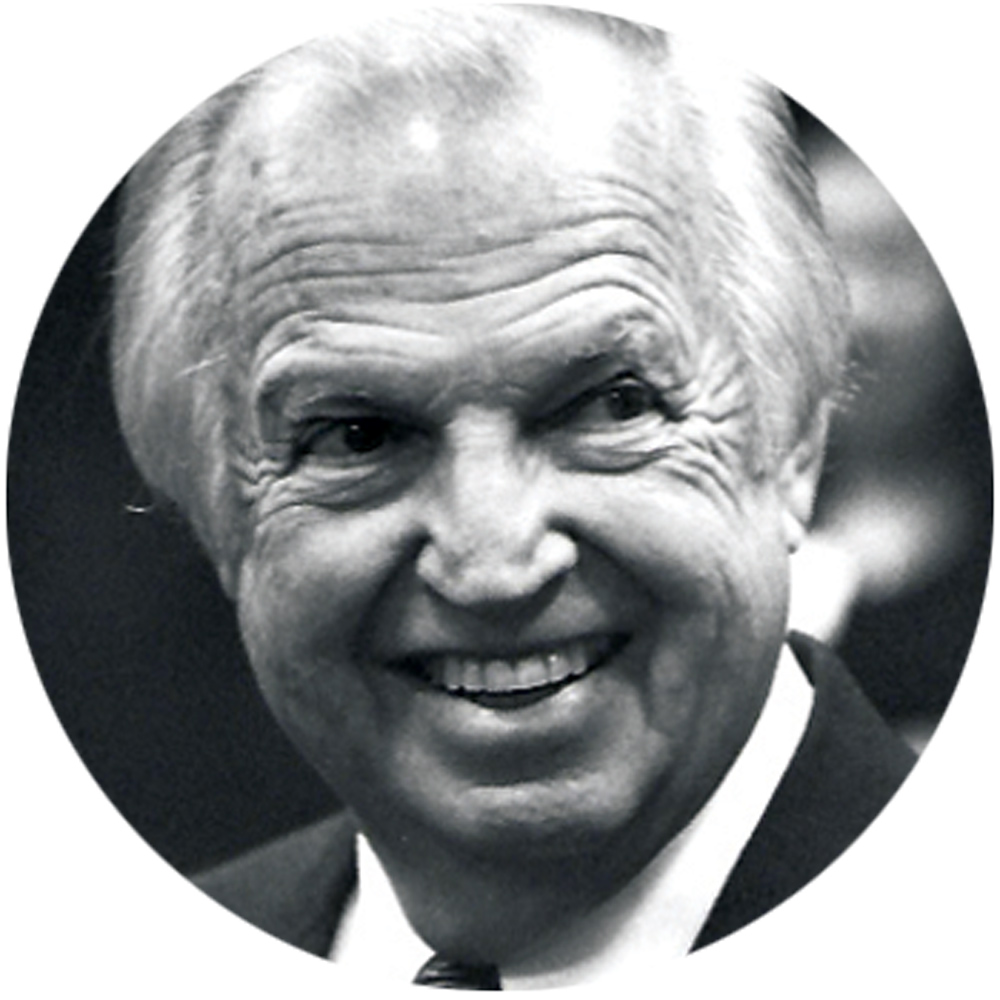
After graduating, Doran began a career in land development, becoming chief executive of Ford Land when it formed in 1970. He devoted three decades to the automaker, serving as vice president of Ford Motor Company until he retired in January 2001.
Doran died on Feb. 10 at the age of 87, but his legacy lives on at ASU. After a successful career, Doran was committed to the advancement of education and helping students achieve their dreams of higher education. His philanthropic spirit focused on ASU, where he gained the knowledge necessary to succeed.
Doran served as an ASU trustee and an ASU Foundation board chairman. He was inducted into the W. P. Carey Alumni Hall of Fame, was a lifetime member of the ASU Alumni Association, and was named an Outstanding Alumnus in 1978. He and his wife were also members of the ASU Foundation’s Leadership Society.
Herbert M. Robertson (BS Finance ’62) He was a retired U.S. Navy commander. Robertson made a generous planned gift in 2013 to support the Department of Finance, making him the largest contributor through the Herbert M. Robertson Support for W. P. Carey Finance donor fund.
2014
Isabella A. Resor
MACC
2013
Michael C. Zunino
BS Marketing
2012
Brandon C. Maxwell
MBA
2011
Brian A. Laesch
MBA
2009
Brent A. Lacey
MBA
2008
Kristin L. Johnson
MBA
2004
Daniel L. Broadbent
BS Accountancy
2000
Jon C. Agers
MBA
1997
Richard W. Barbar
MBA
Jason M. Lutz
BS Finance
1958
James Ronald Grimm
BS Accountancy
W. P. Carey Hall of Fame

After graduating, Doran began a career in land development, becoming chief executive of Ford Land when it formed in 1970. He devoted three decades to the automaker, serving as vice president of Ford Motor Company until he retired in January 2001.
Doran died on Feb. 10 at the age of 87, but his legacy lives on at ASU. After a successful career, Doran was committed to the advancement of education and helping students achieve their dreams of higher education. His philanthropic spirit focused on ASU, where he gained the knowledge necessary to succeed.
Doran served as an ASU trustee and an ASU Foundation board chairman. He was inducted into the W. P. Carey Alumni Hall of Fame, was a lifetime member of the ASU Alumni Association, and was named an Outstanding Alumnus in 1978. He and his wife were also members of the ASU Foundation’s Leadership Society.
Herbert M. Robertson (BS Finance ’62) He was a retired U.S. Navy commander. Robertson made a generous planned gift in 2013 to support the Department of Finance, making him the largest contributor through the Herbert M. Robertson Support for W. P. Carey Finance donor fund.
2014
Isabella A. Resor
MACC
2013
Michael C. Zunino
BS Marketing
2012
Brandon C. Maxwell
MBA
2011
Brian A. Laesch
MBA
2009
Brent A. Lacey
MBA
2008
Kristin L. Johnson
MBA
2004
Daniel L. Broadbent
BS Accountancy
2000
Jon C. Agers
MBA
1997
Richard W. Barbar
MBA
Jason M. Lutz
BS Finance
1958
James Ronald Grimm
BS Accountancy
W. P. Carey Hall of Fame
5 ASU deans share the business tools they can’t work without
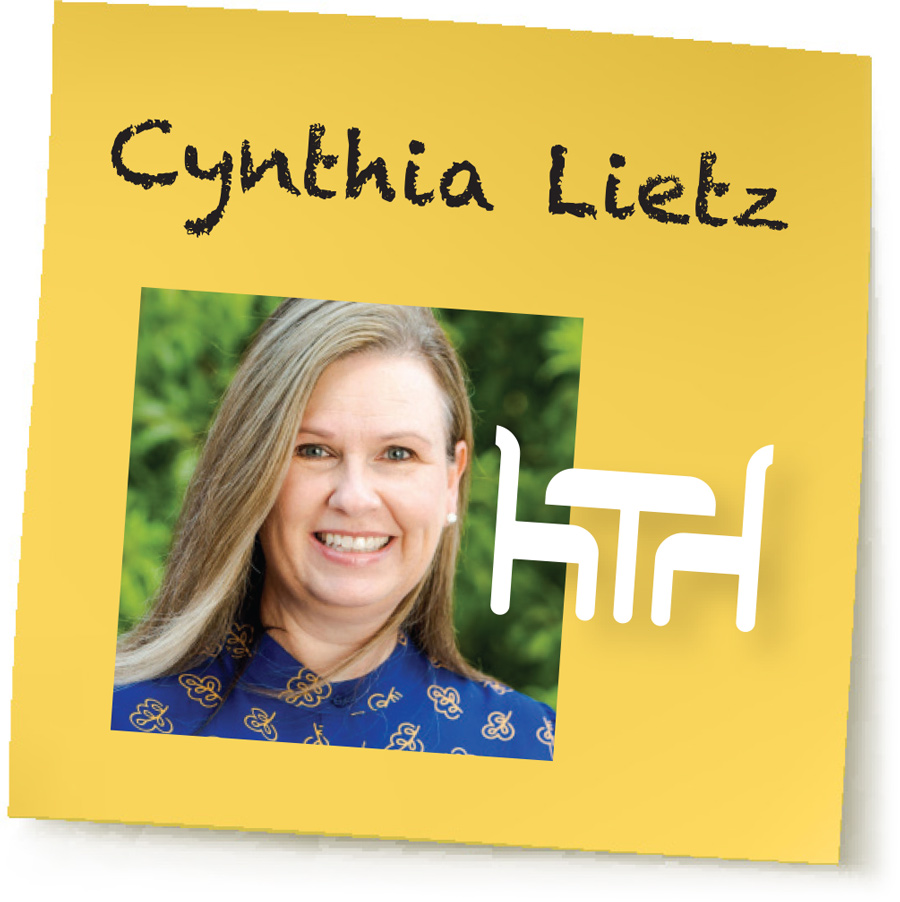
Dean of the Watts College of Public Service and Community Solutions and President’s Professor in the School of Social Work
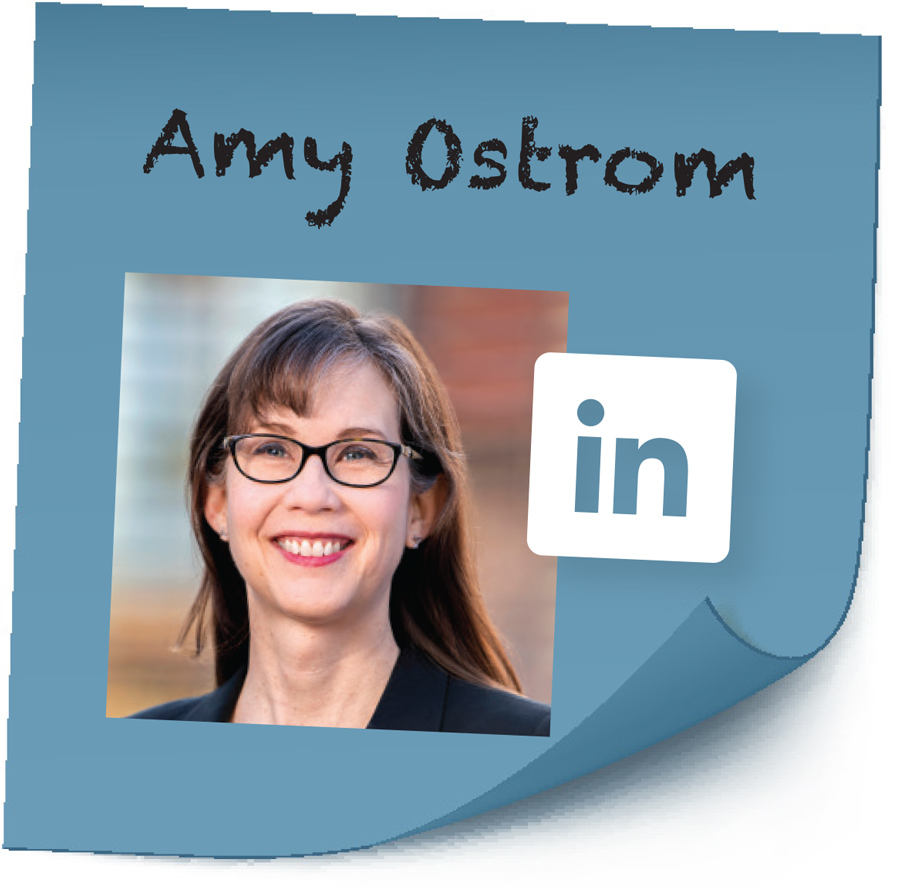
Interim Dean and PetSmart Chair in Services Leadership at the W. P. Carey School of Business
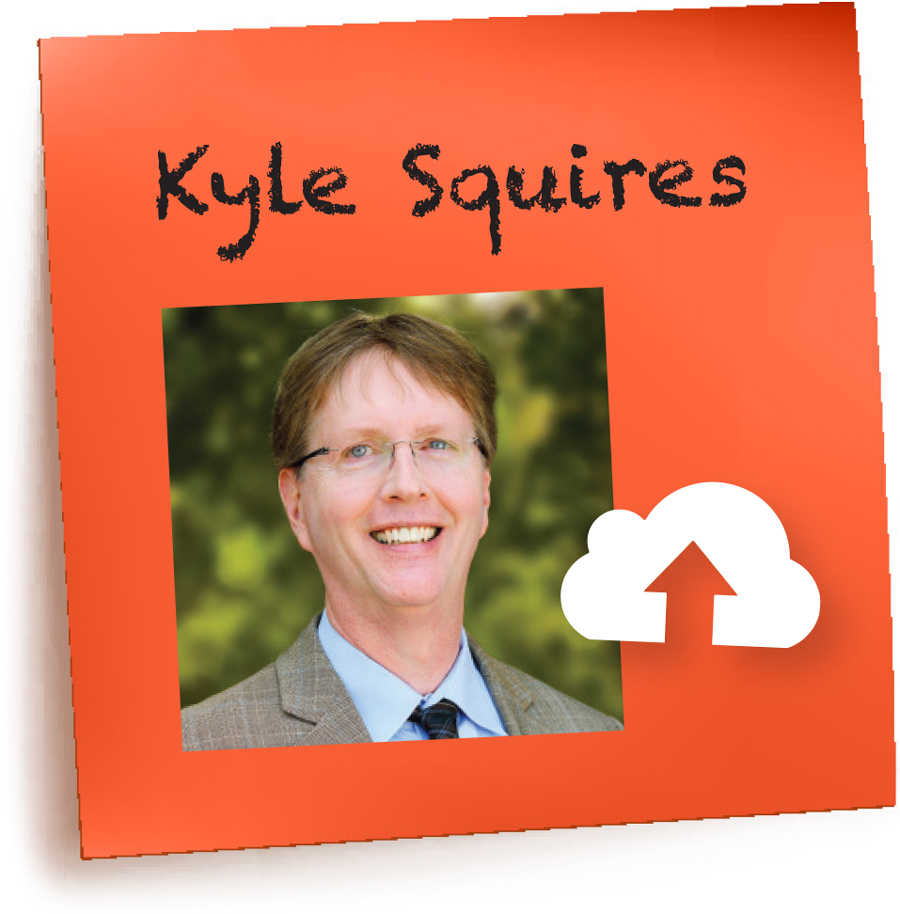
Dean of the Ira A. Fulton Schools of Engineering
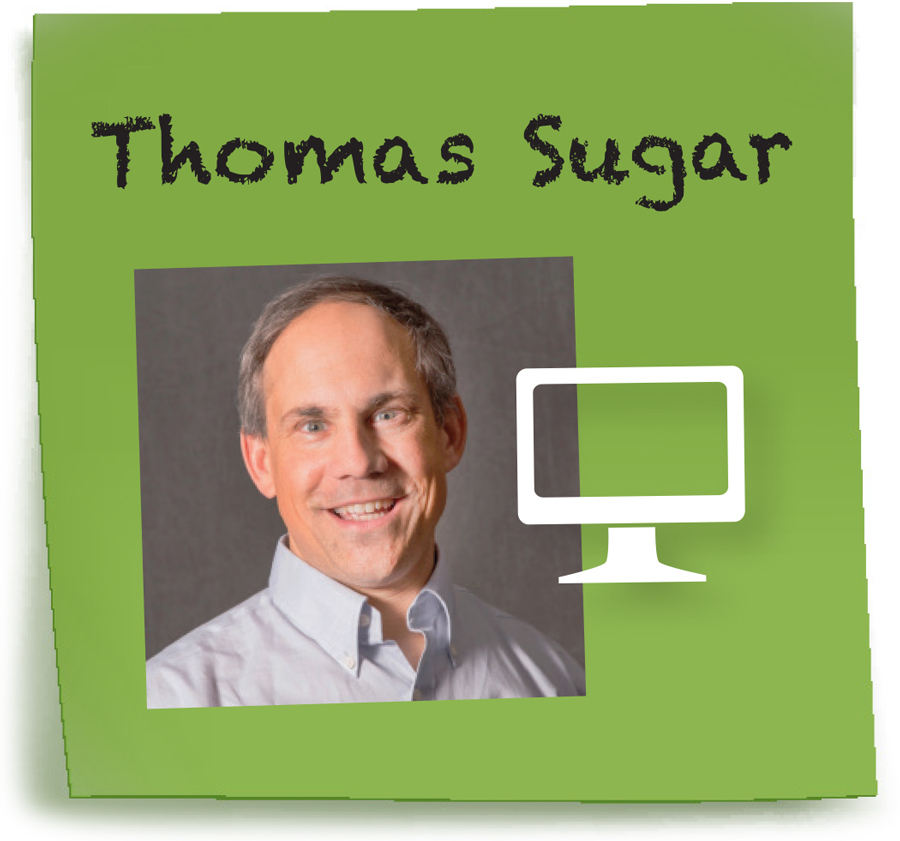
Professor and associate dean of The Honors College at ASU Polytechnic
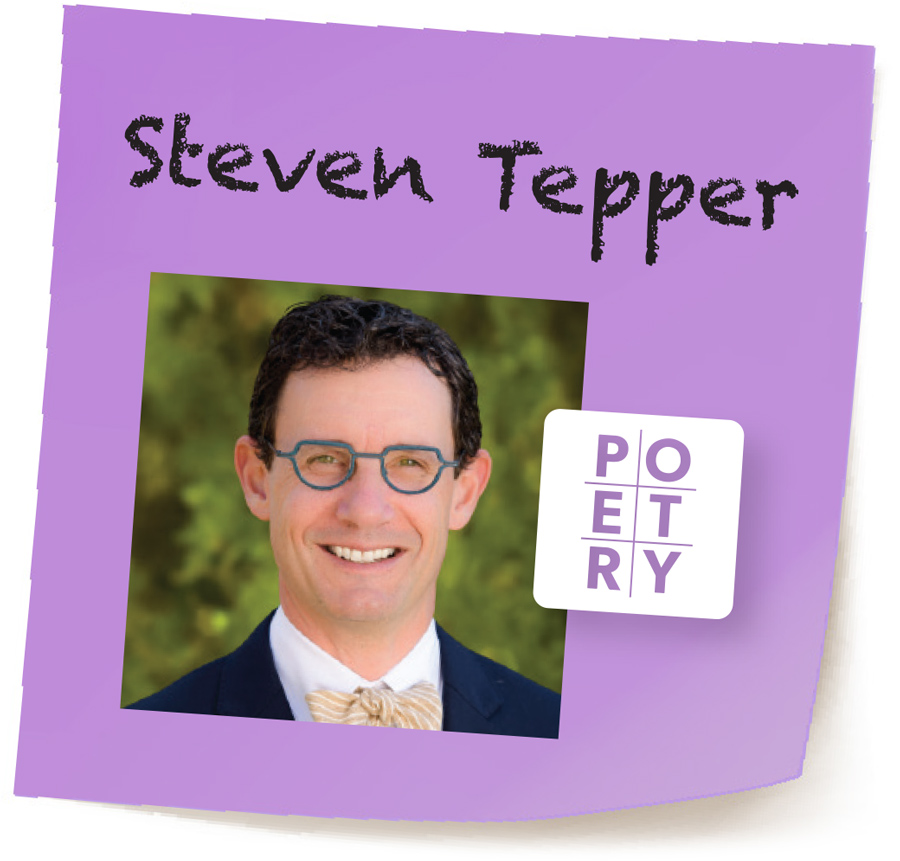
Professor and dean of the Herberger Institute for Design and the Arts
5 ASU deans share the business tools they can’t work without

Dean of the Watts College of Public Service and Community Solutions and President’s Professor in the School of Social Work

Interim Dean and PetSmart Chair in Services Leadership at the W. P. Carey School of Business

Dean of the Ira A. Fulton Schools of Engineering

Professor and associate dean of The Honors College at ASU Polytechnic

Professor and dean of the Herberger Institute for Design and the Arts
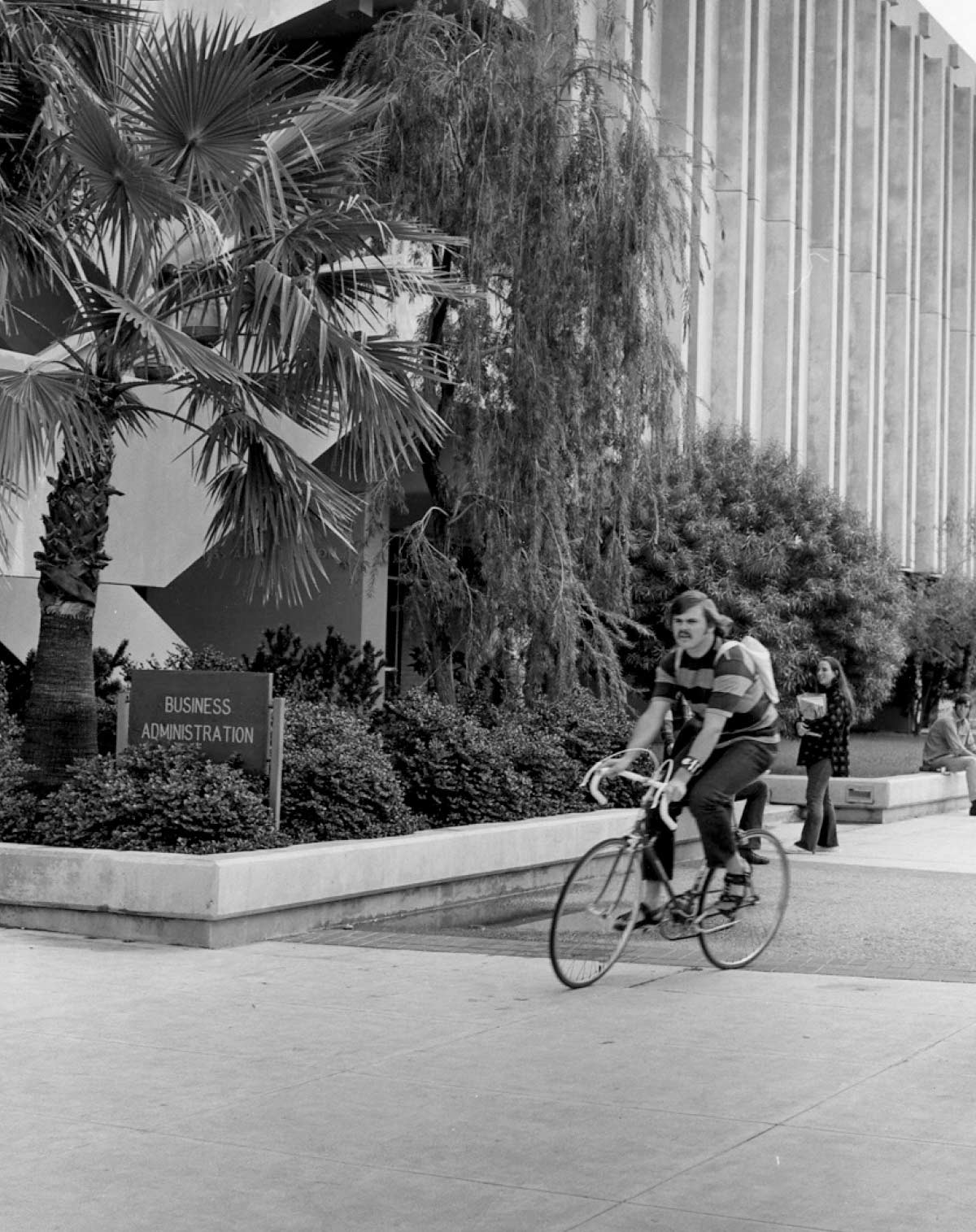
Greetings from your alma mater.


